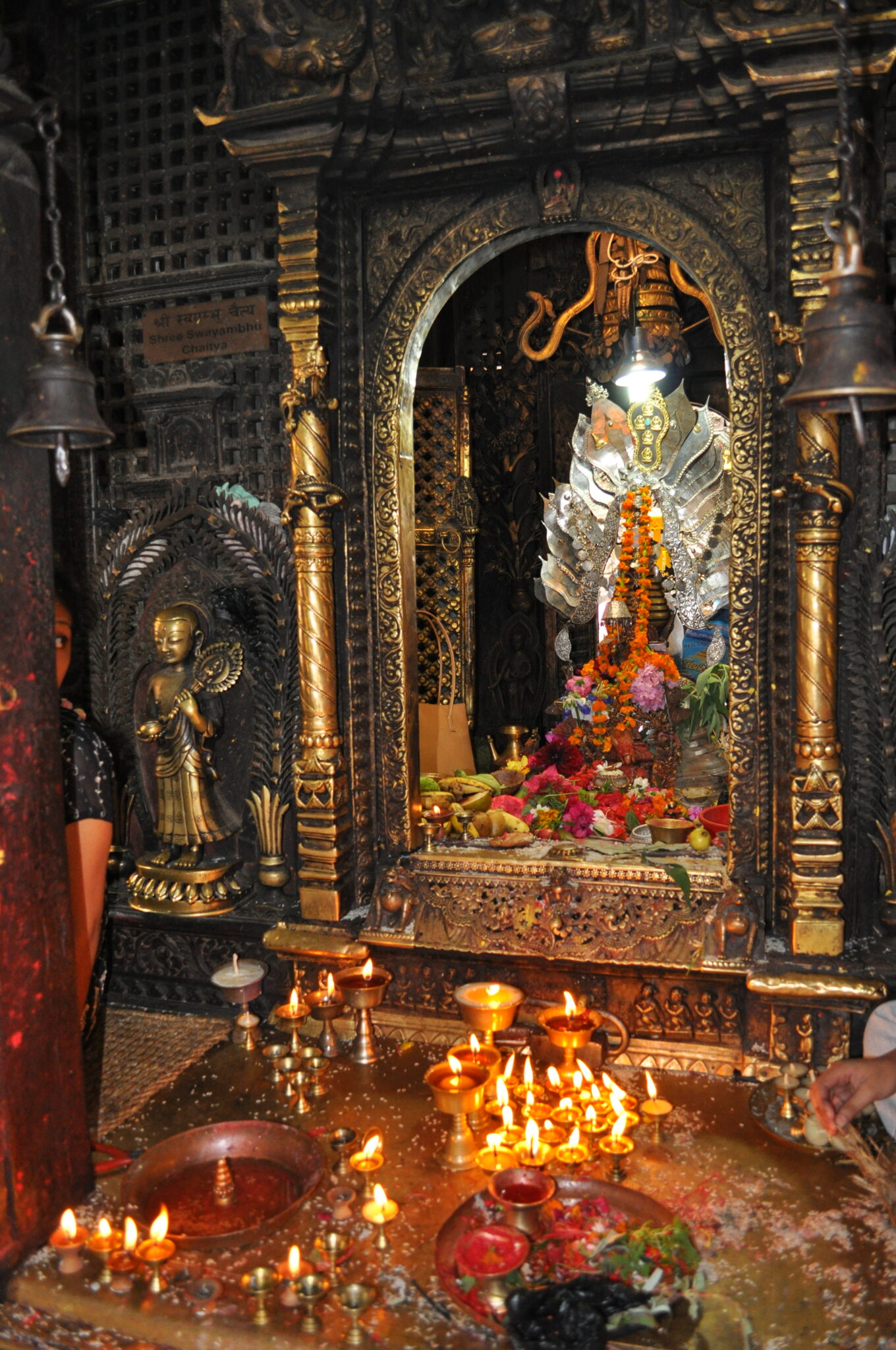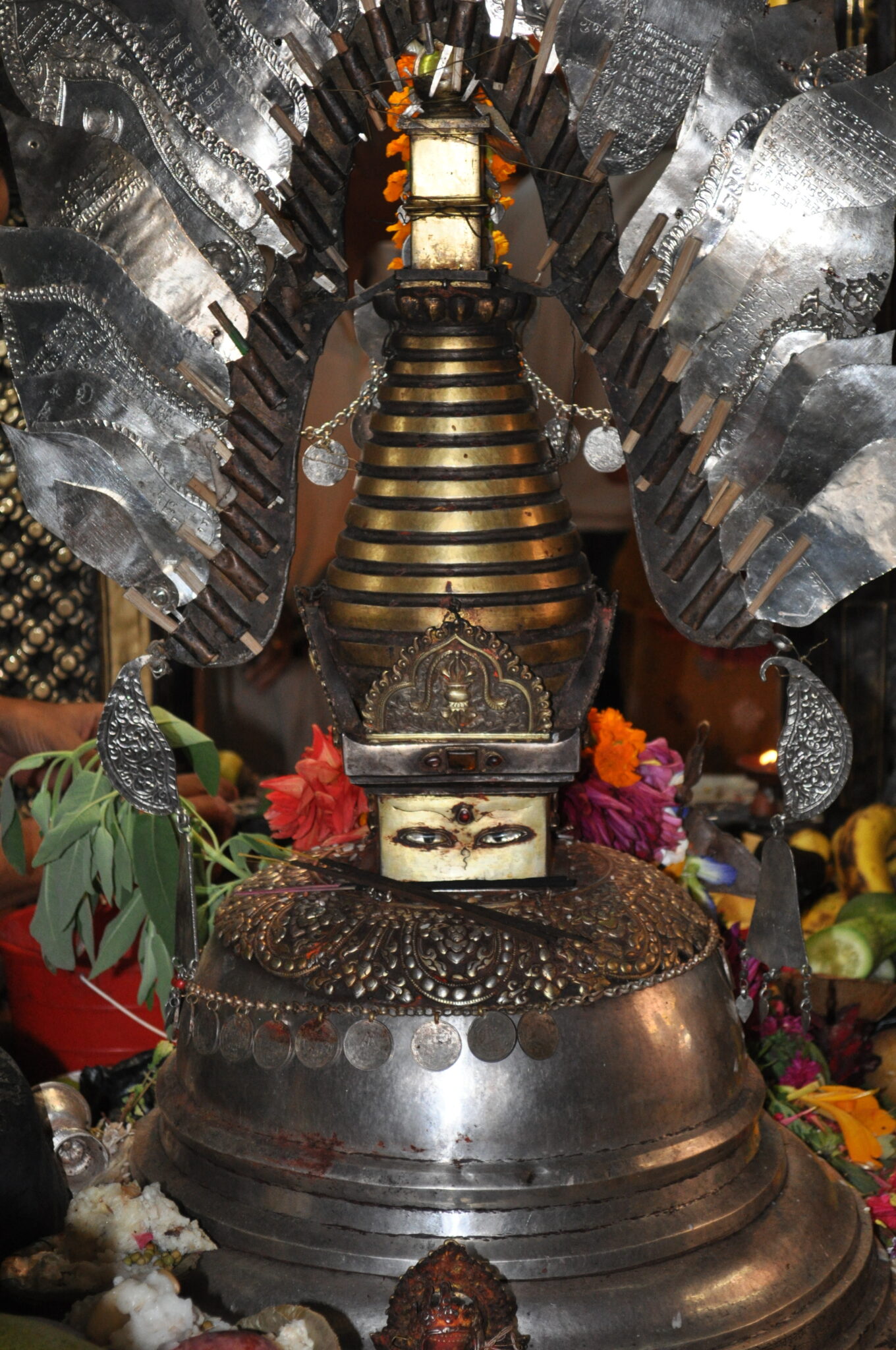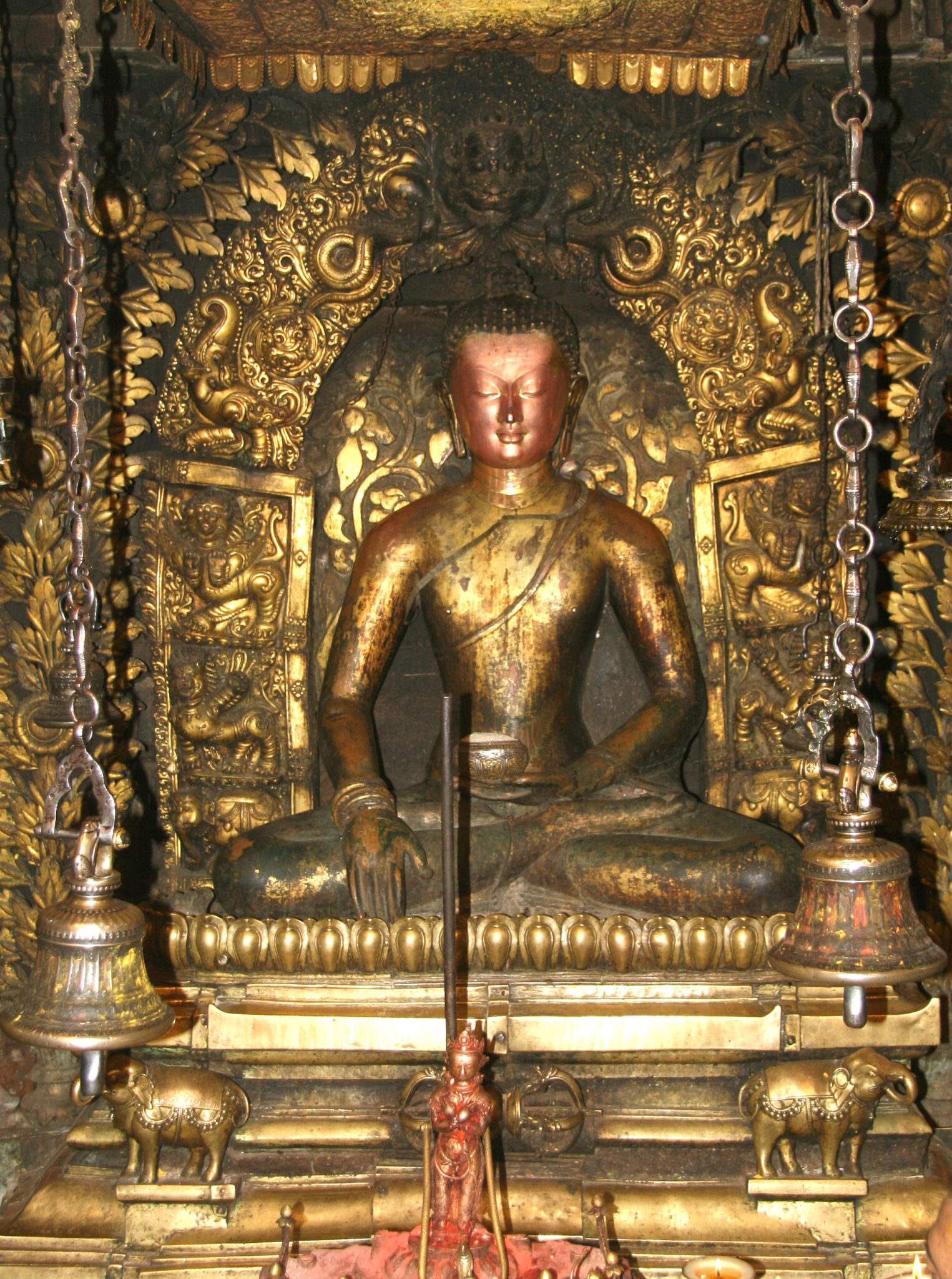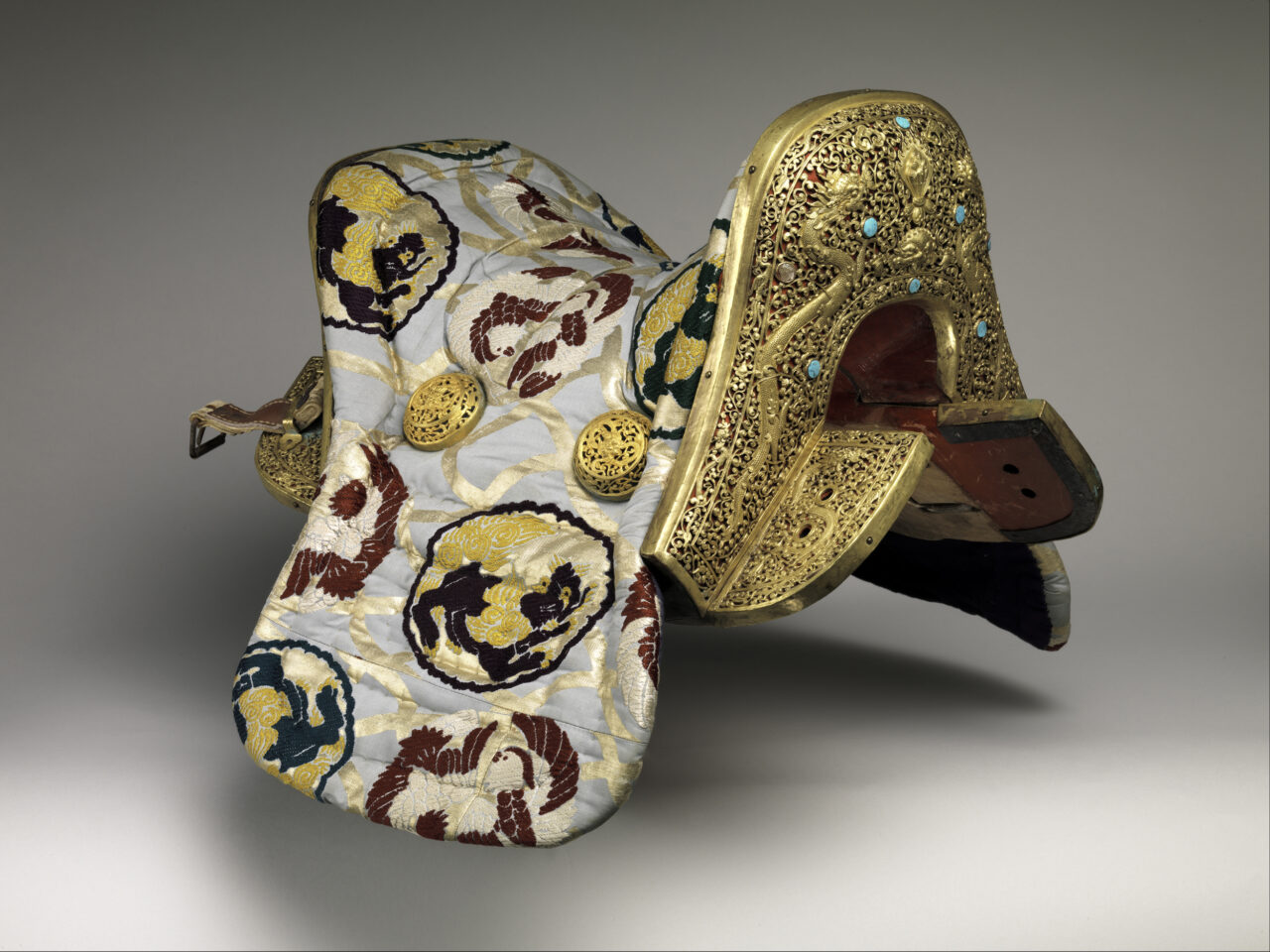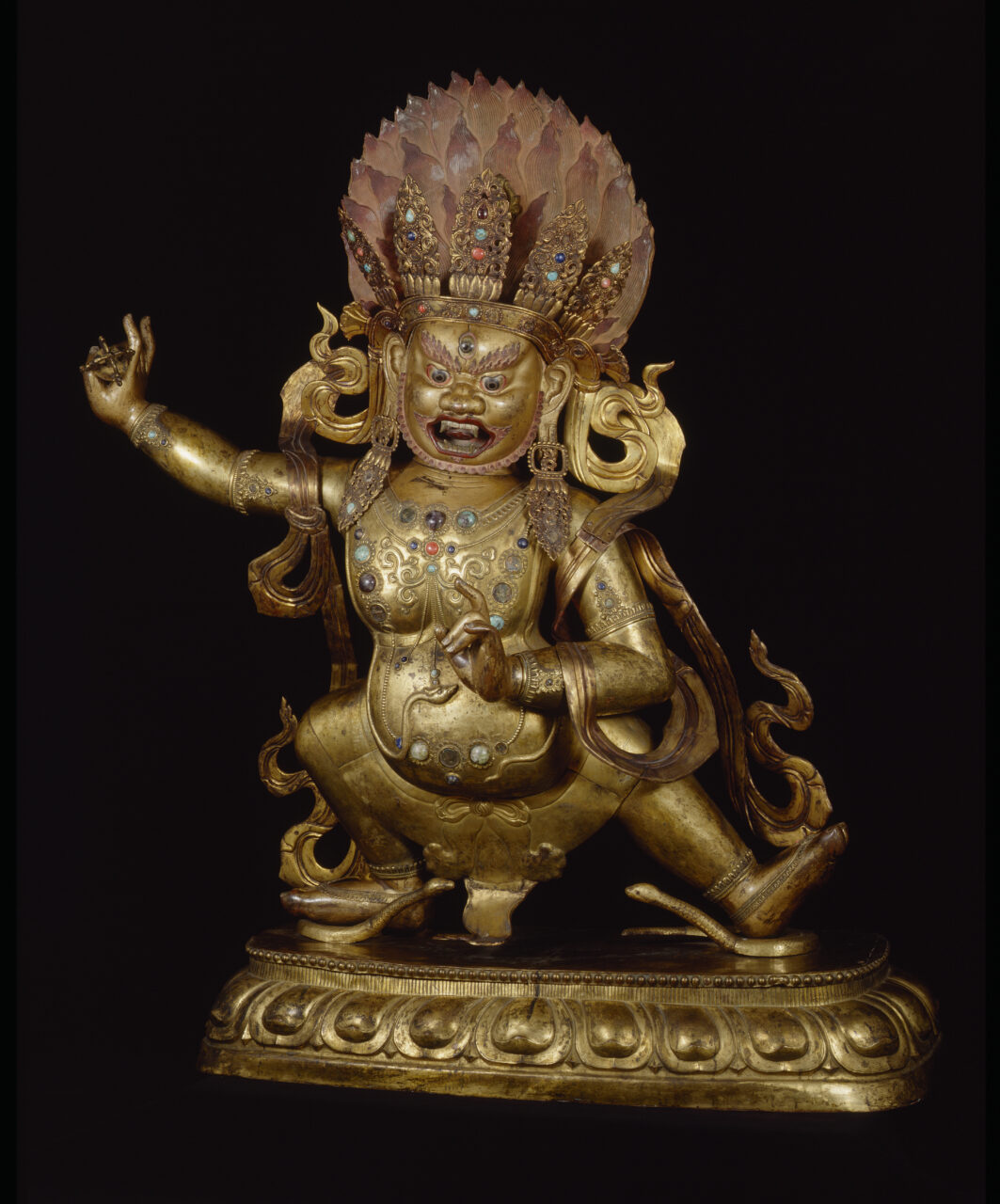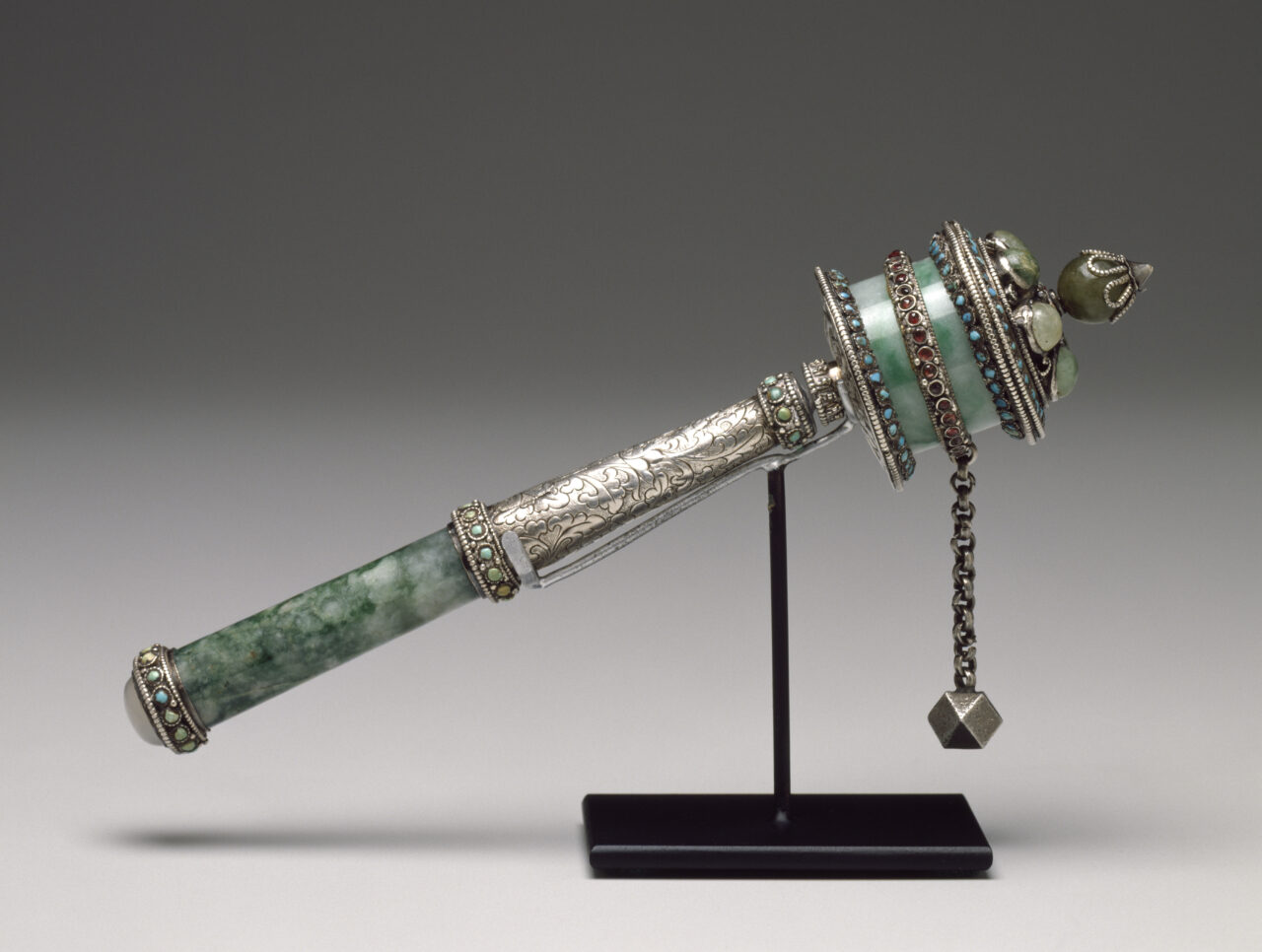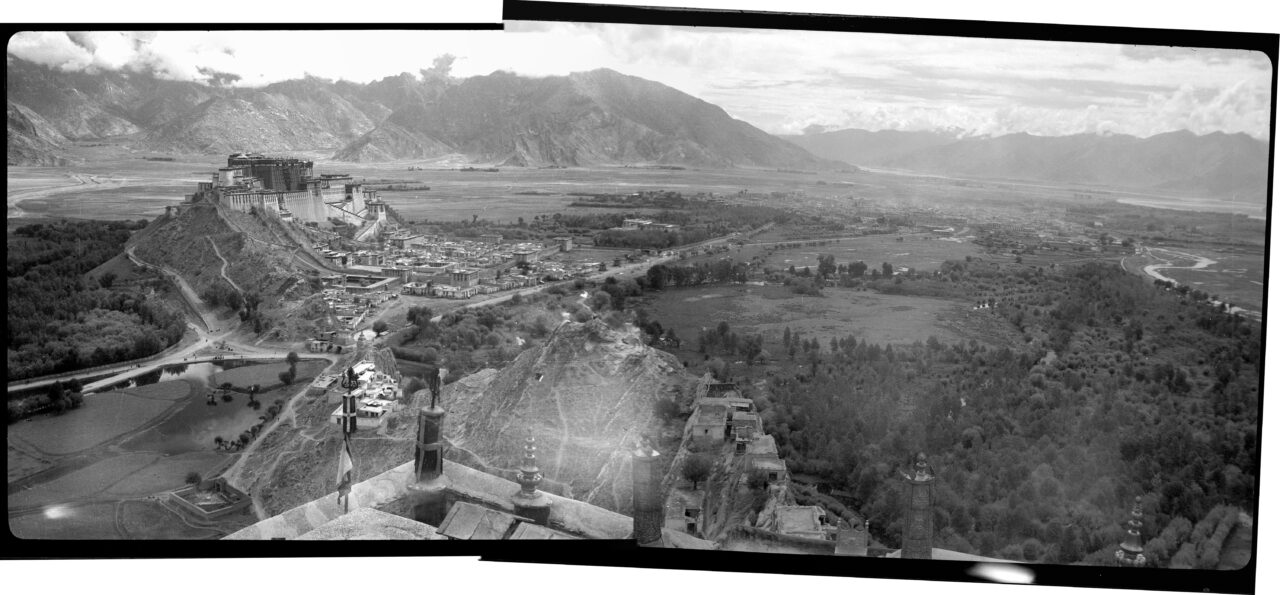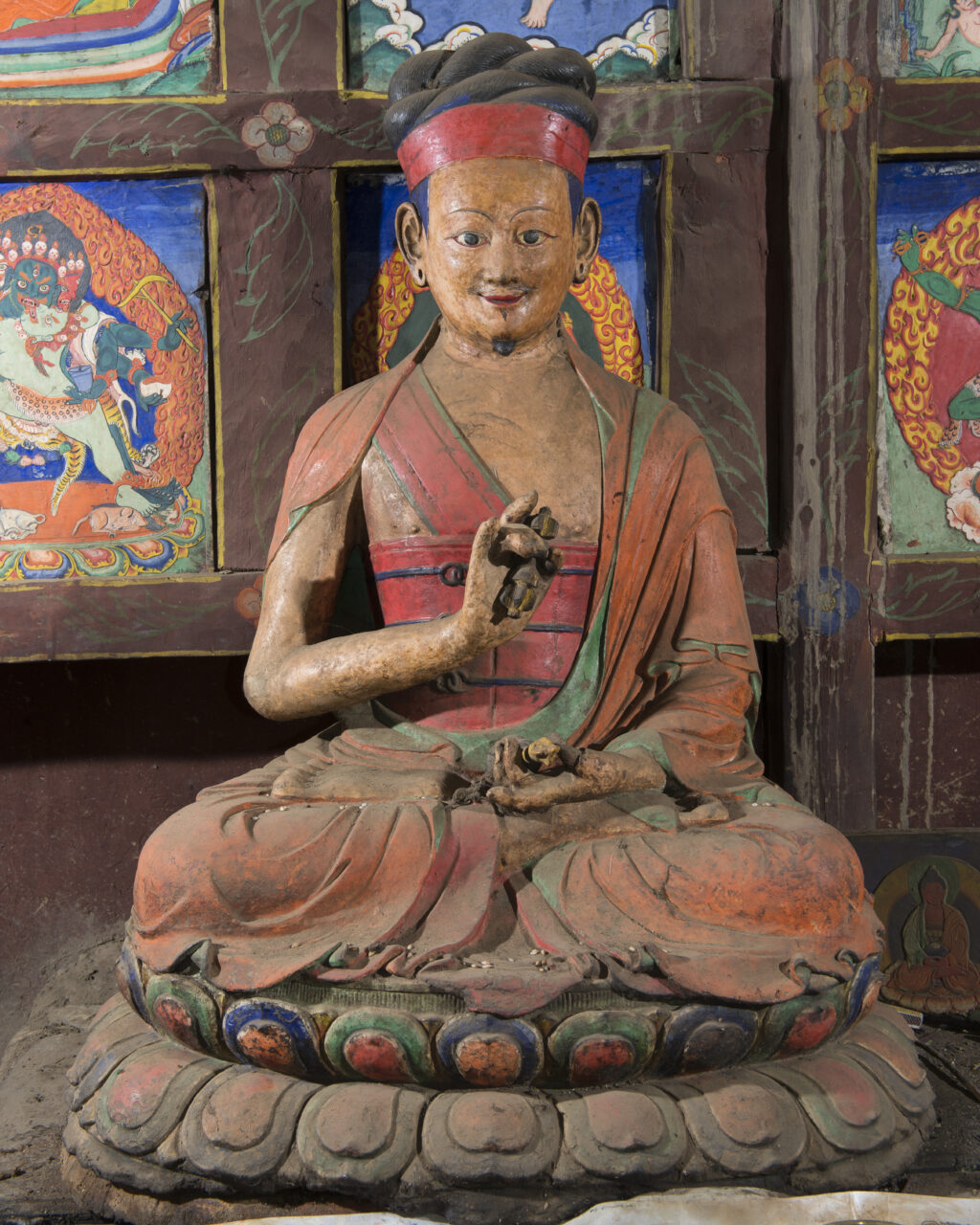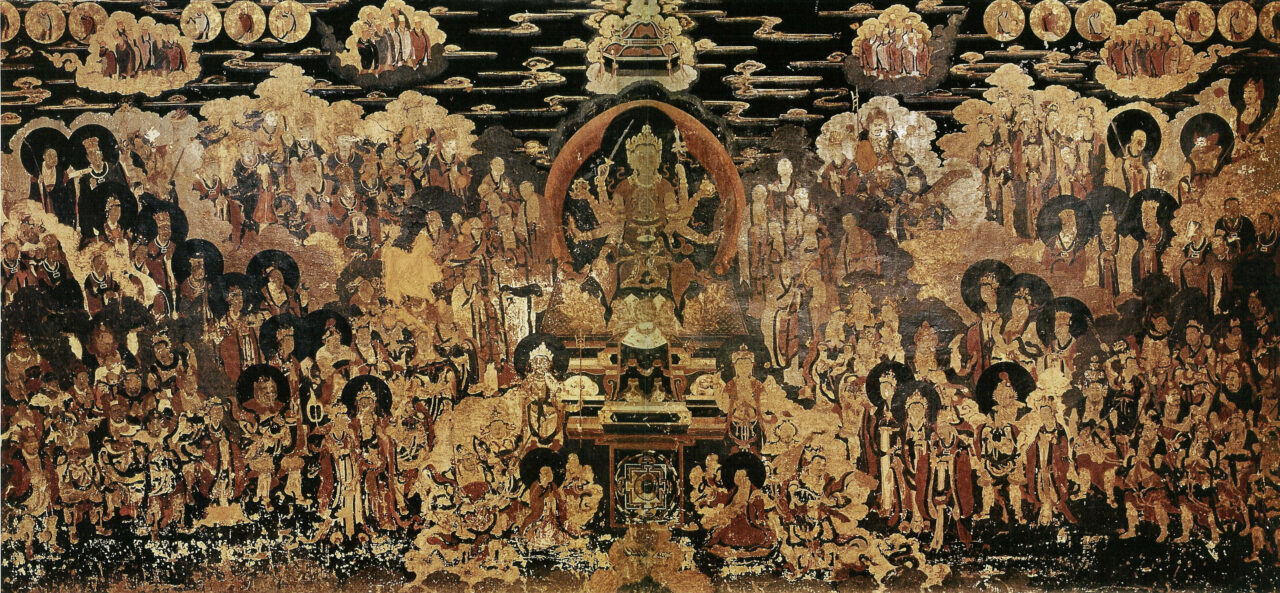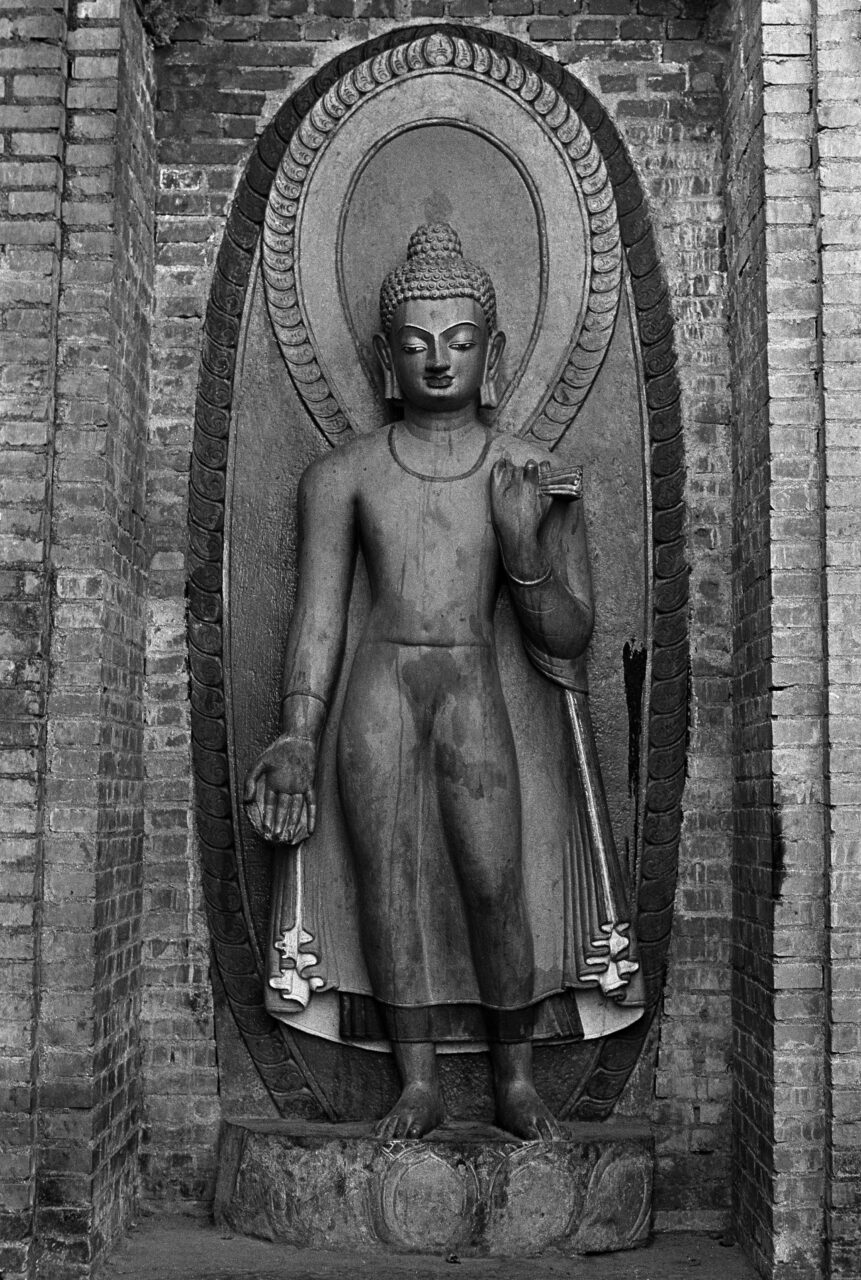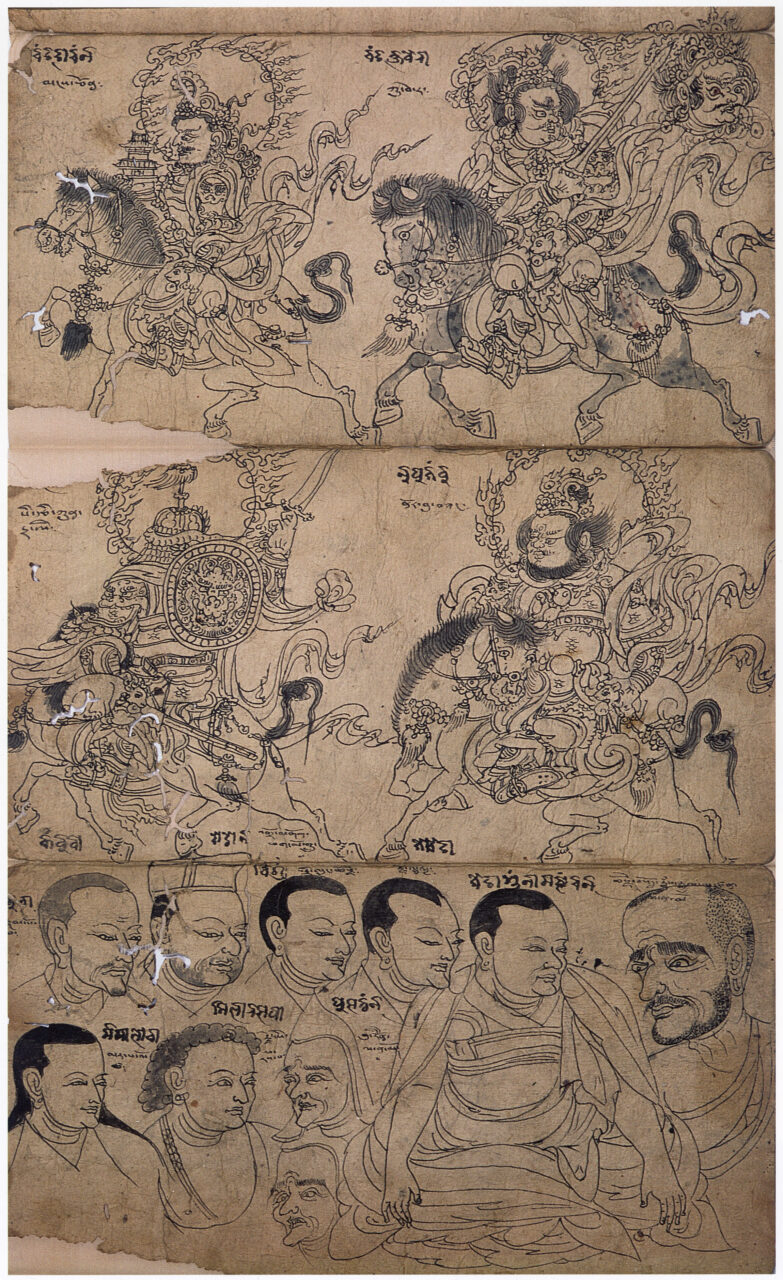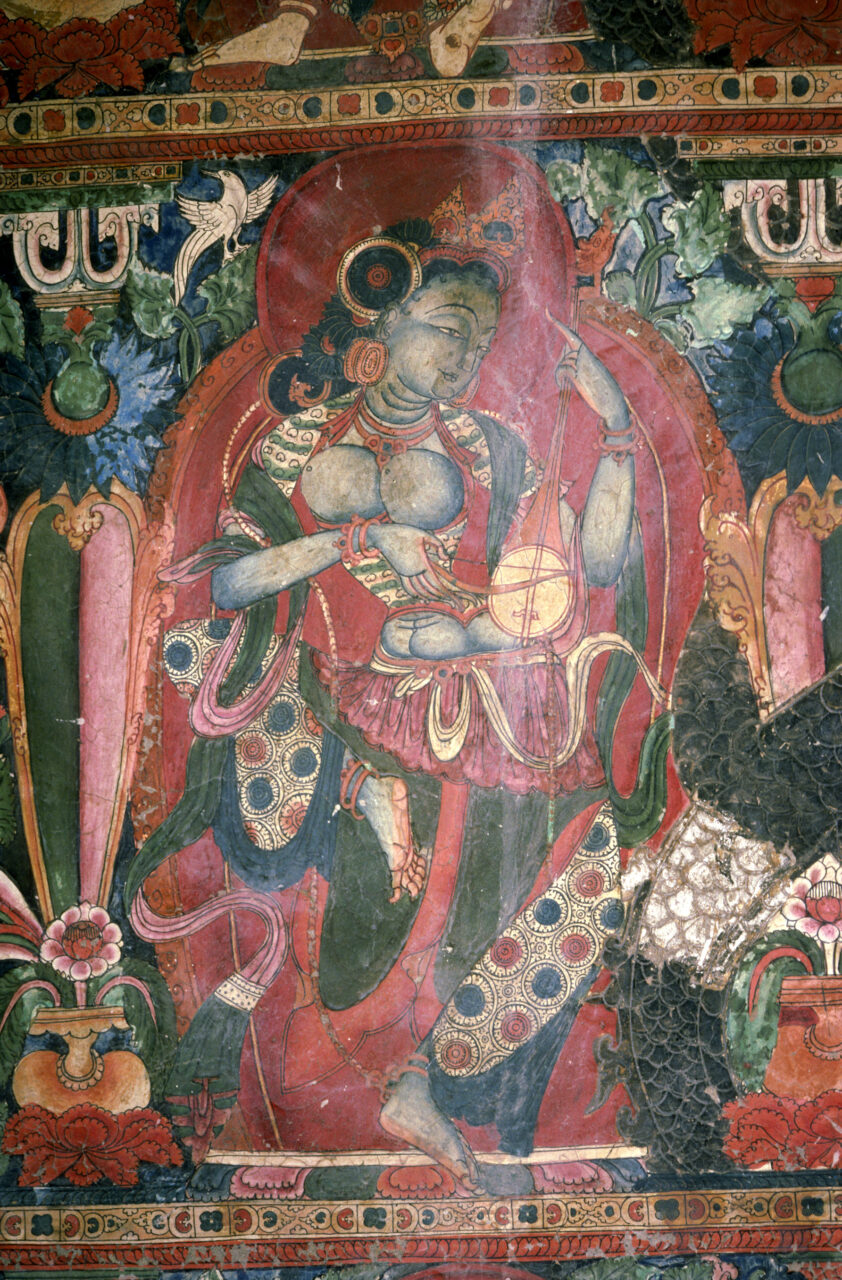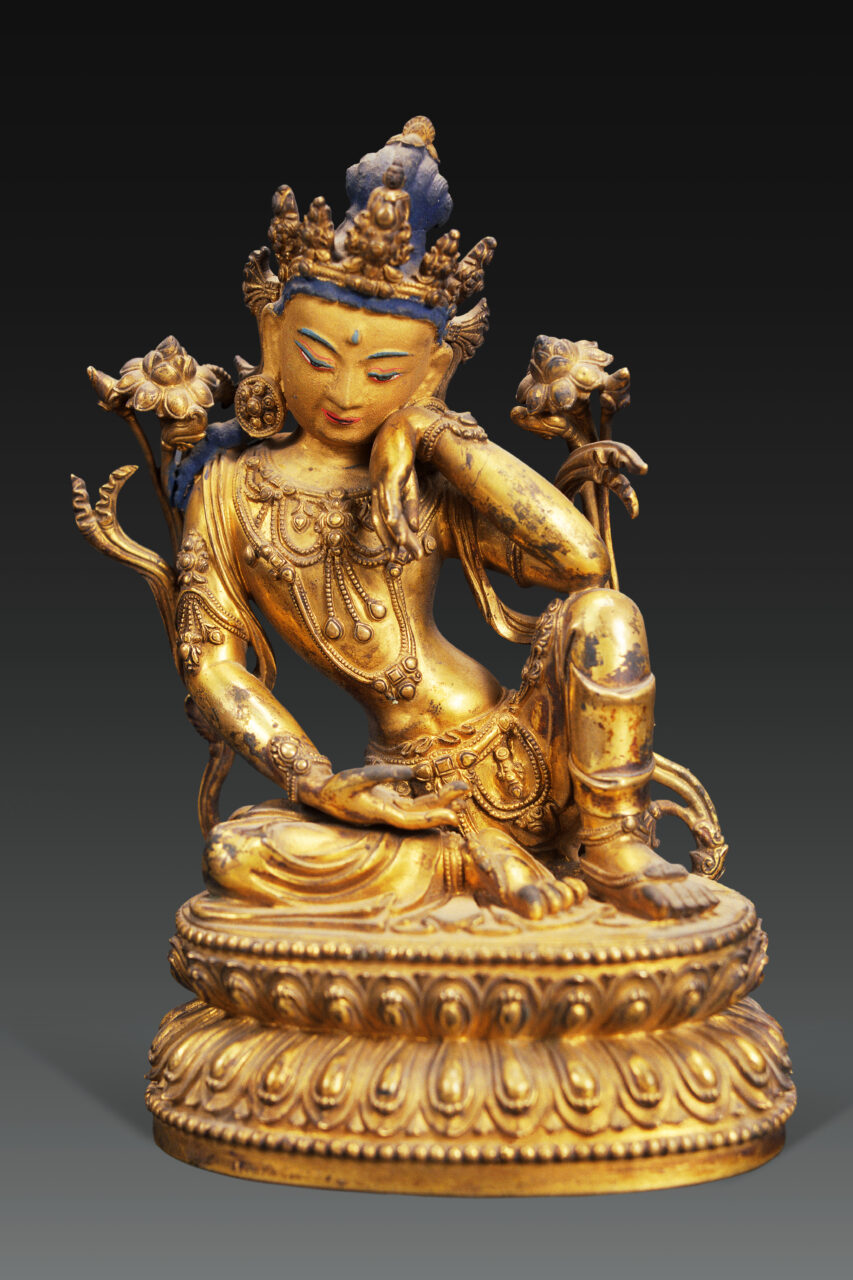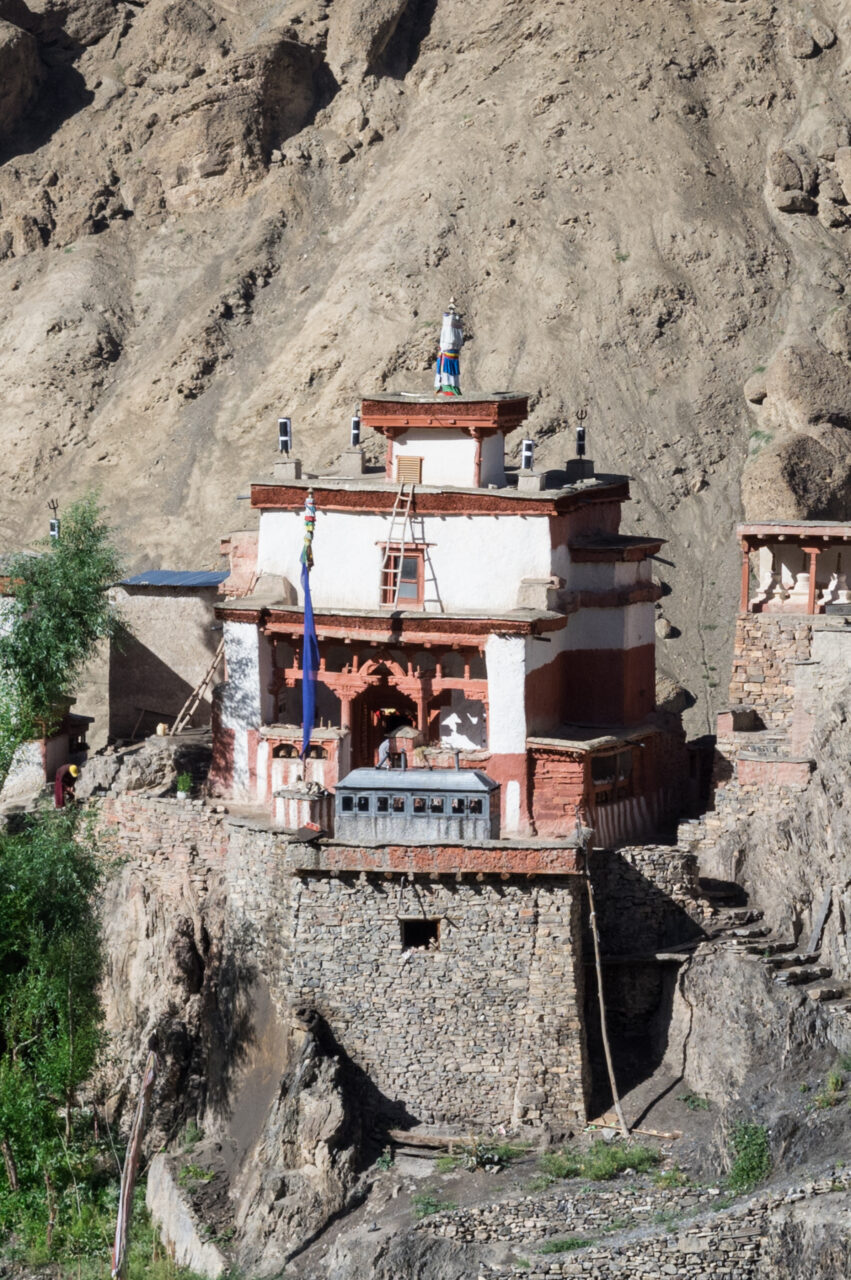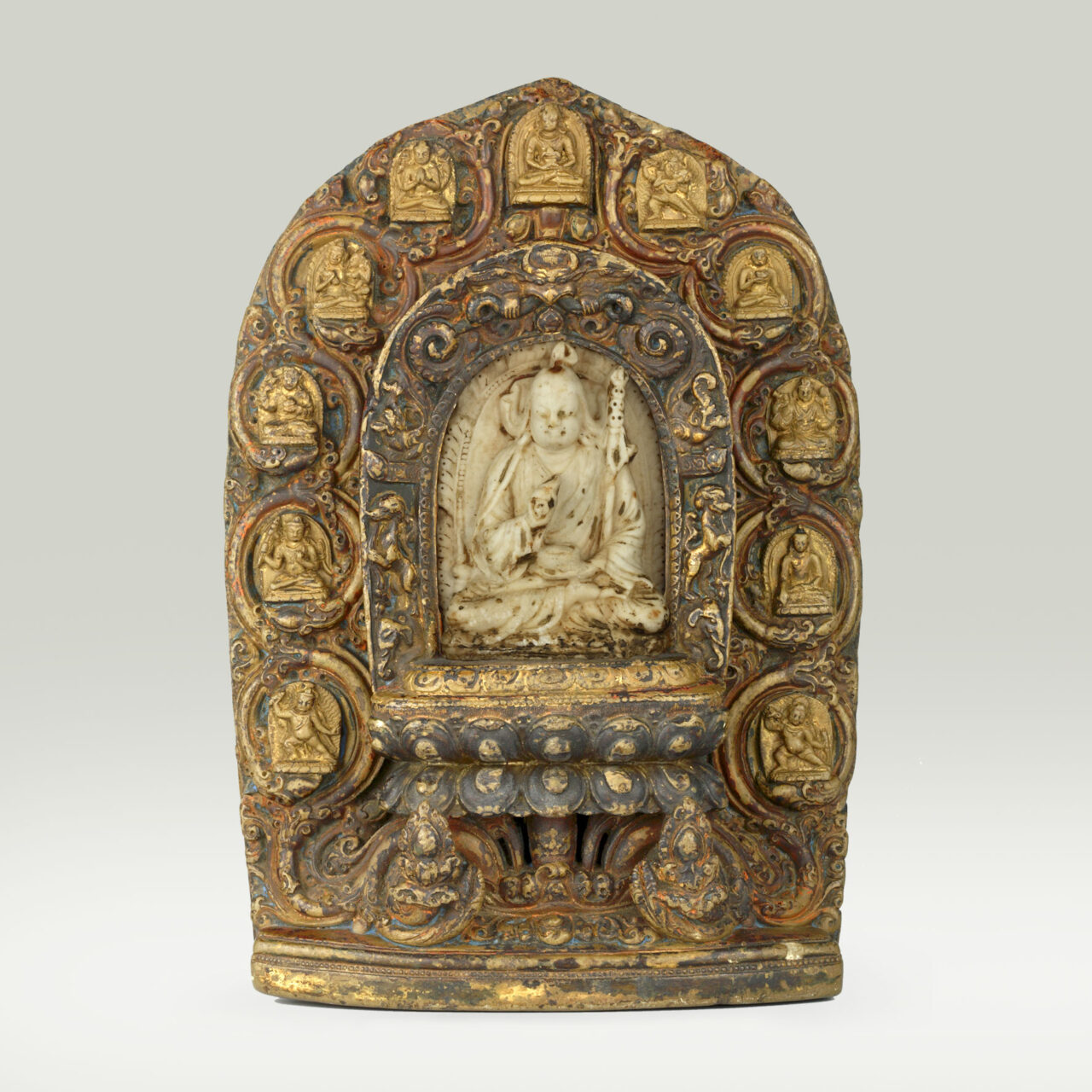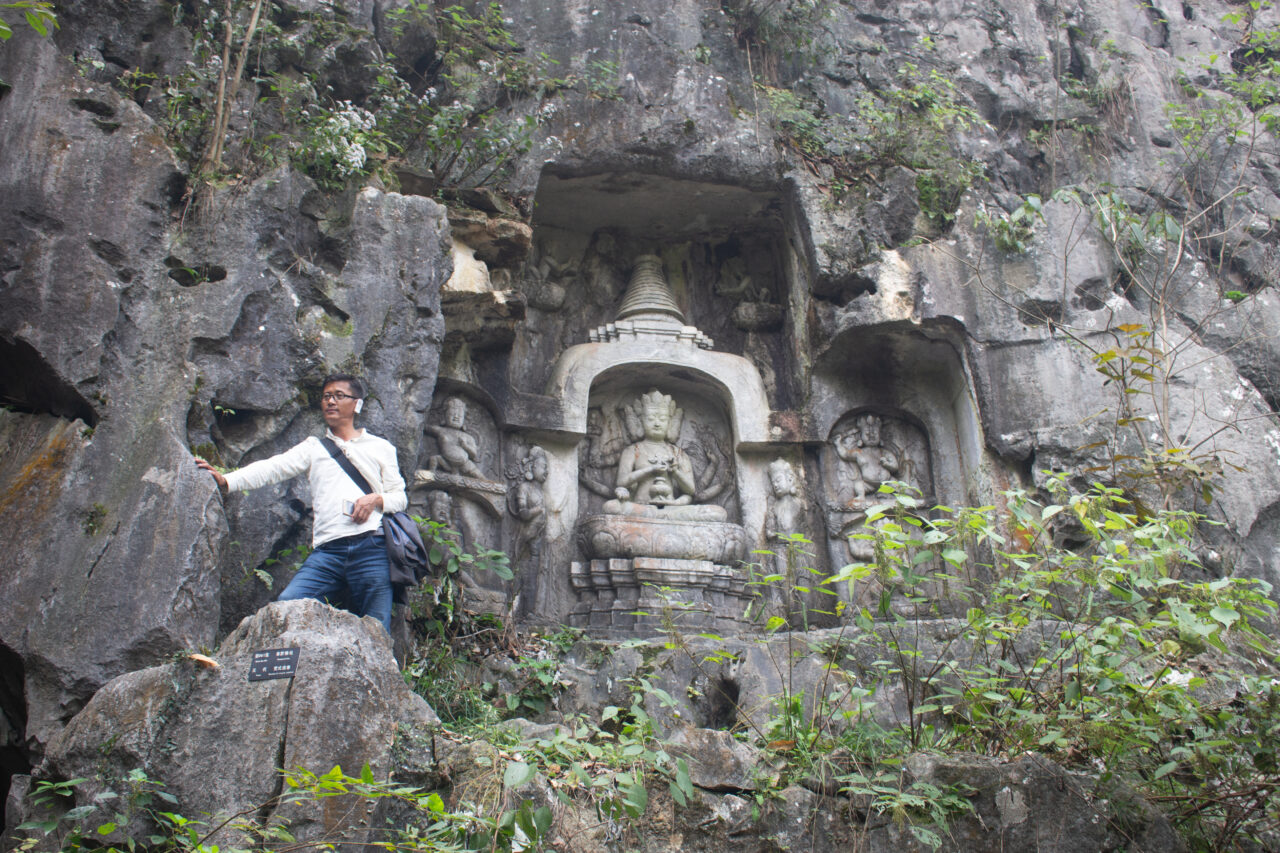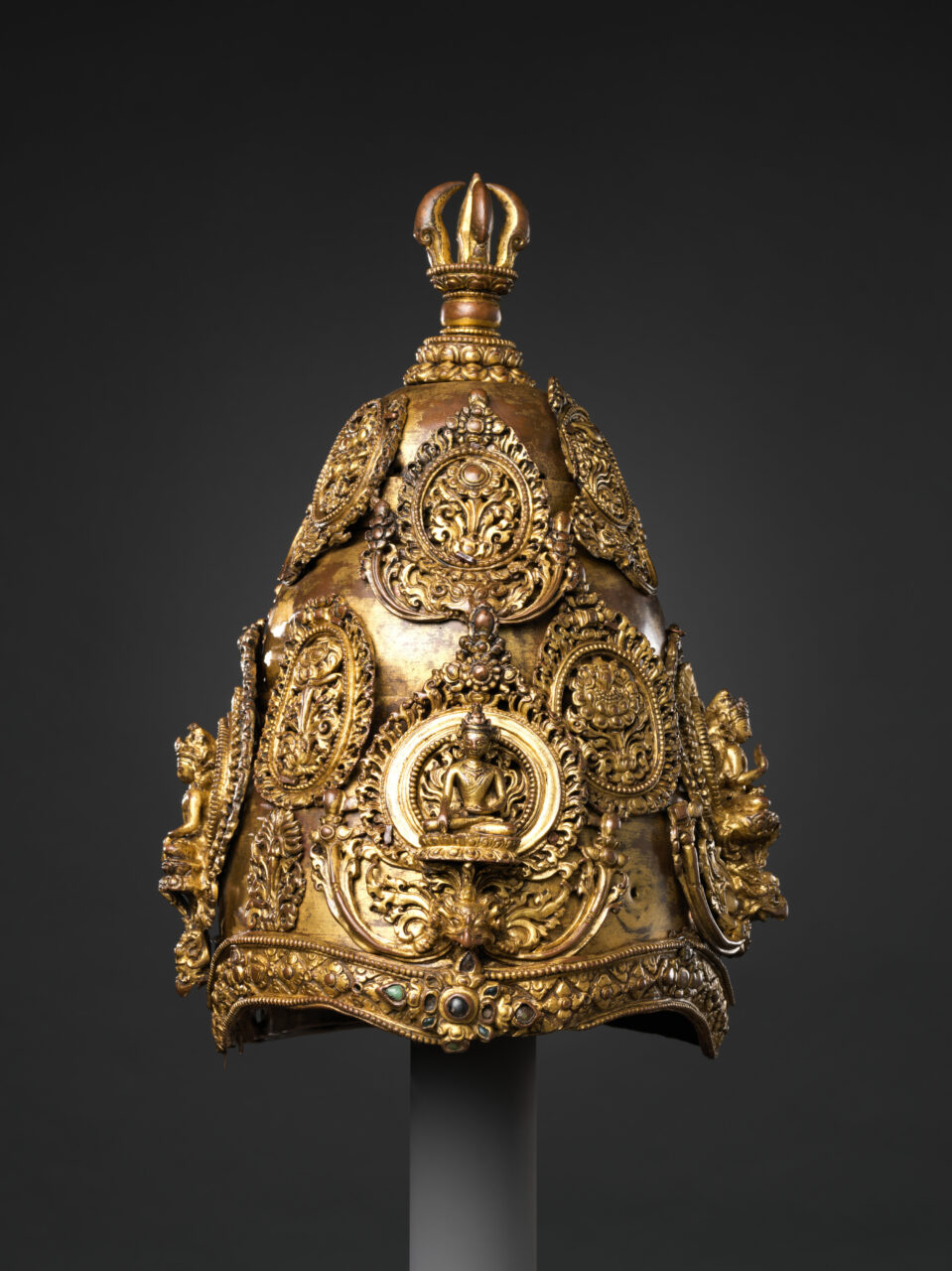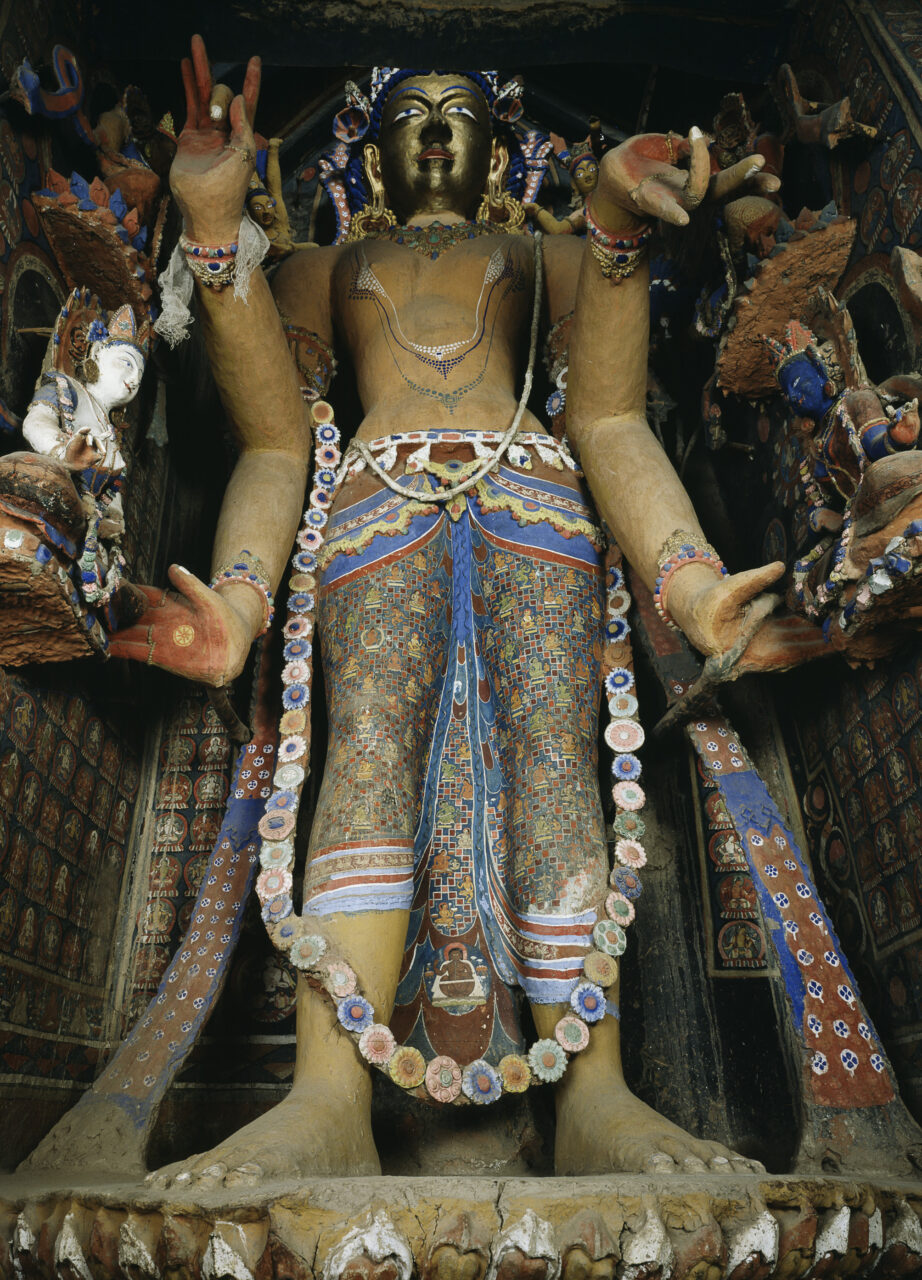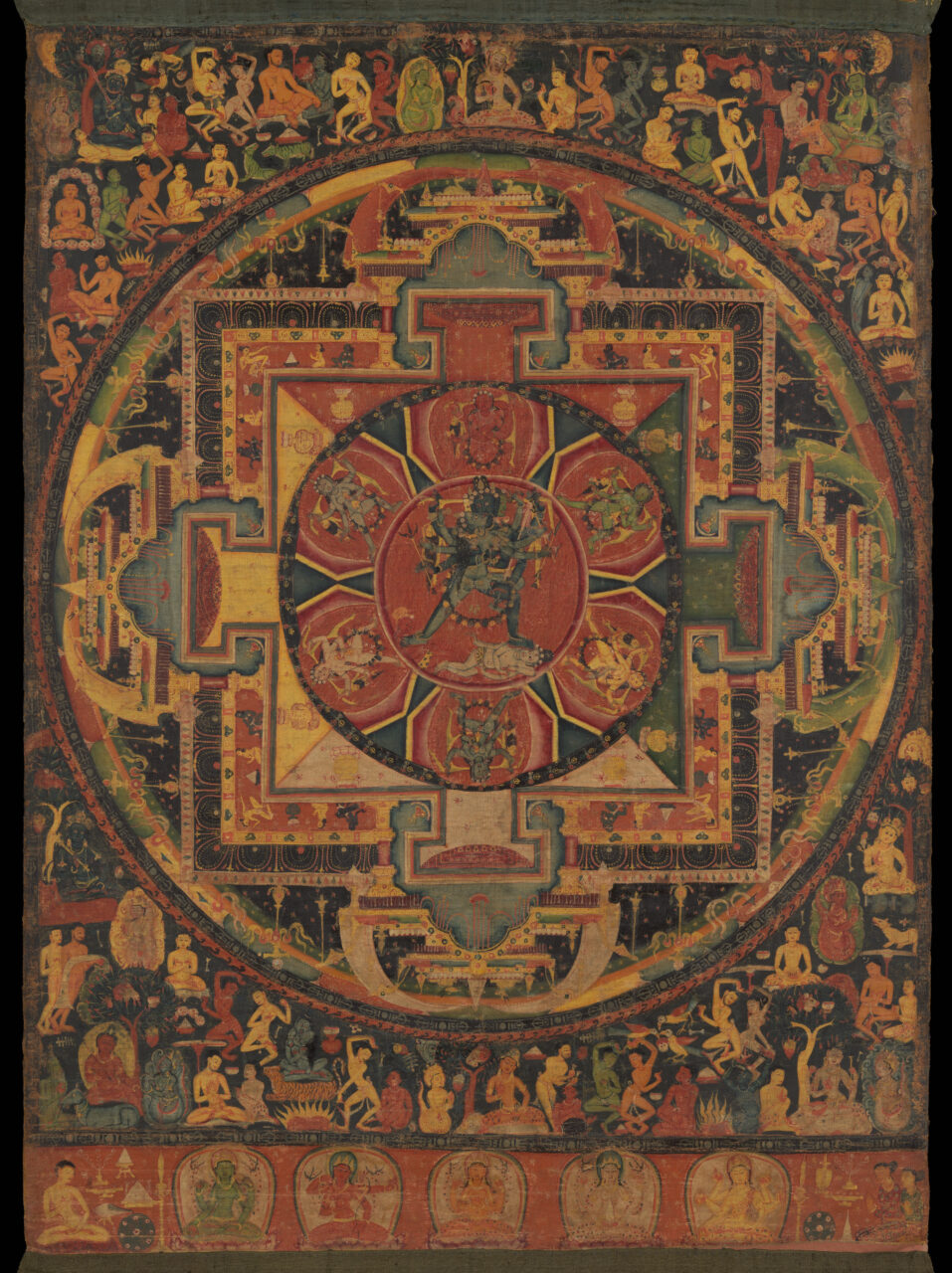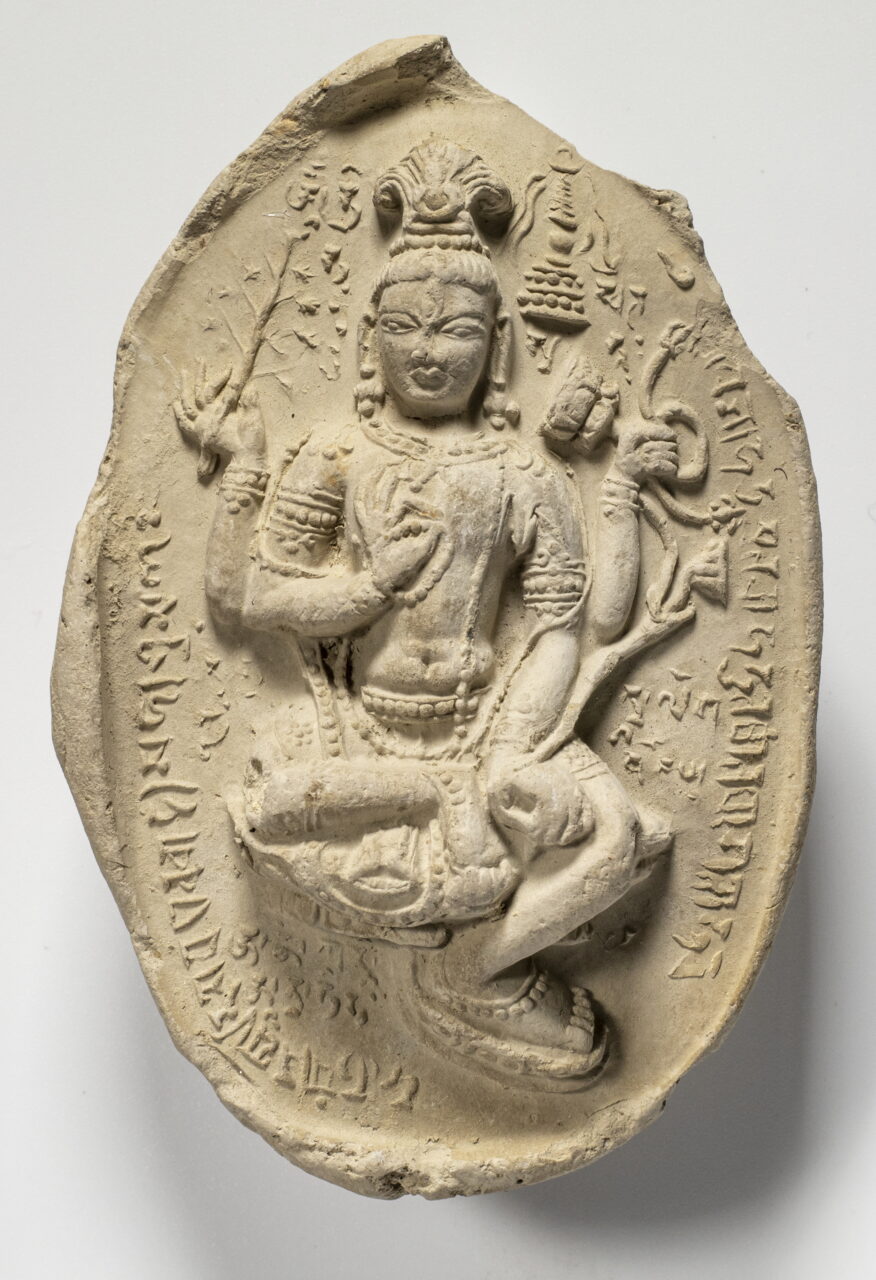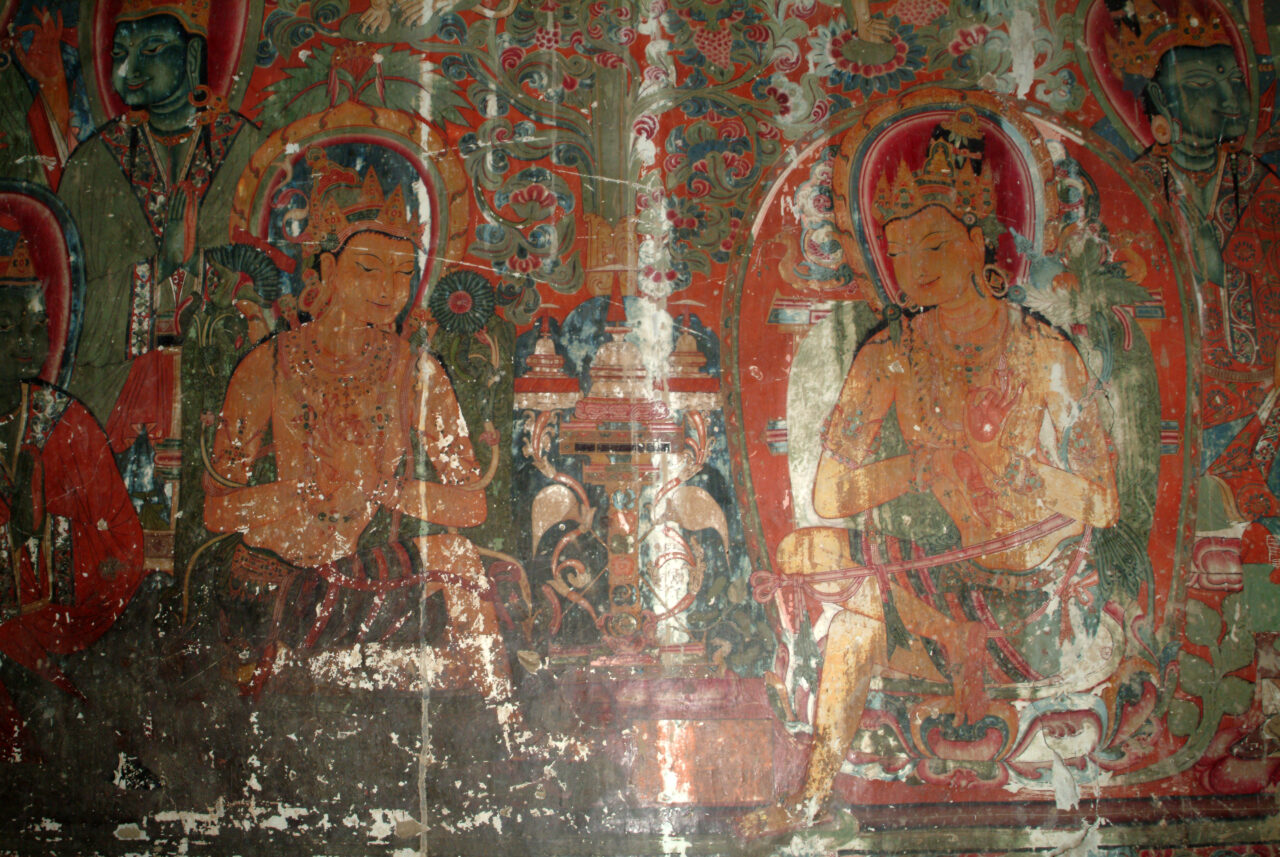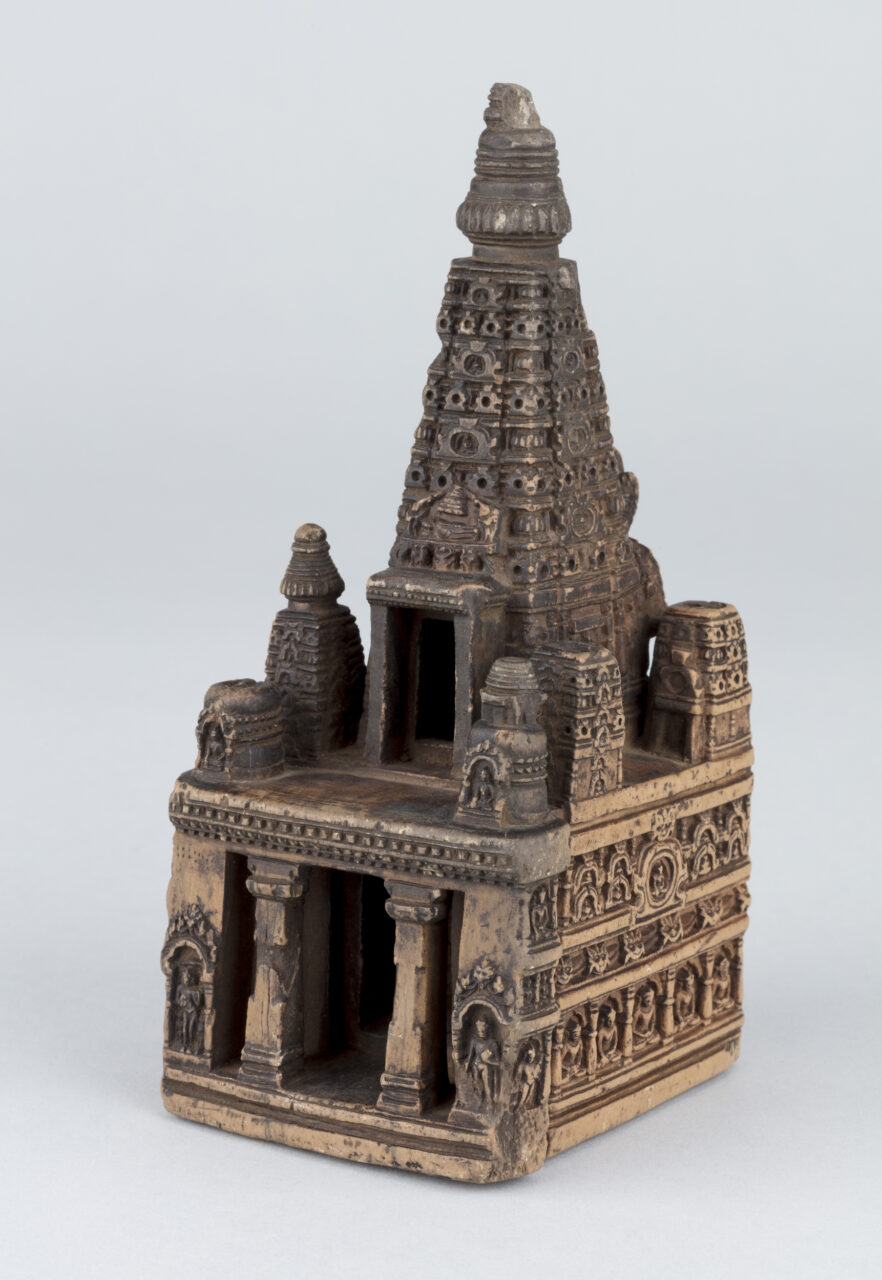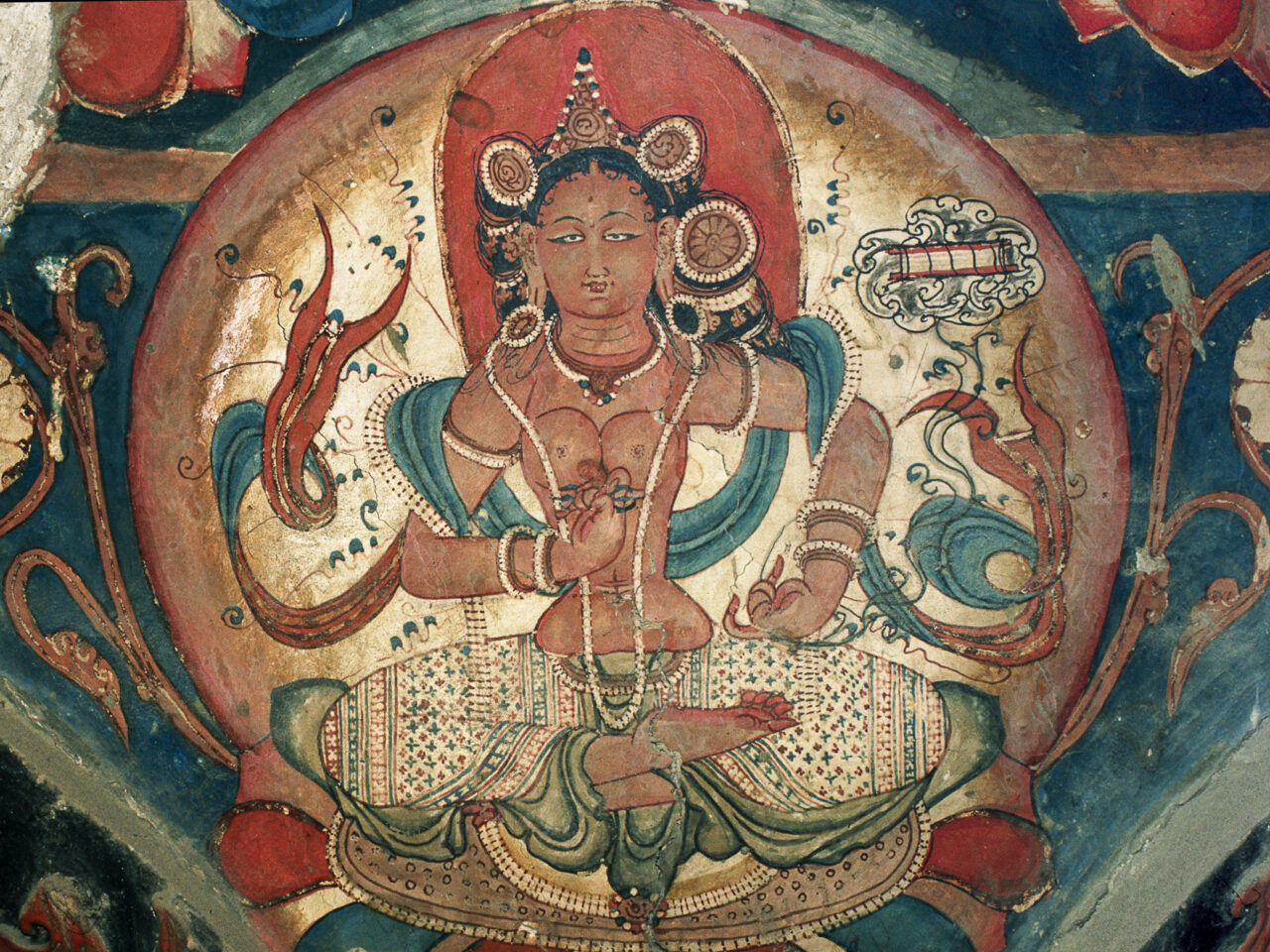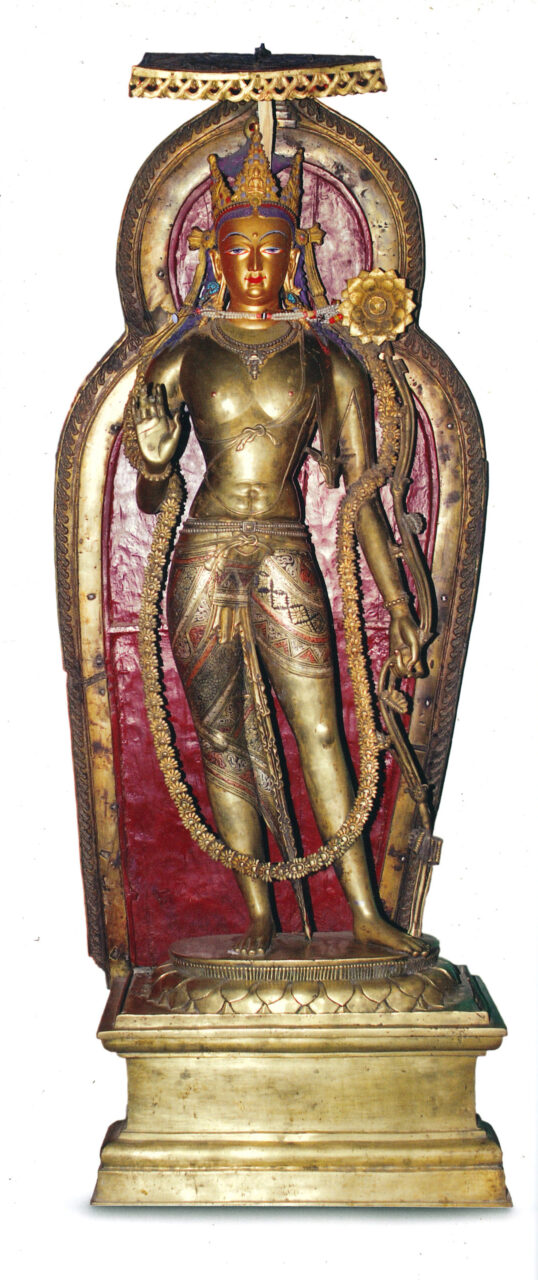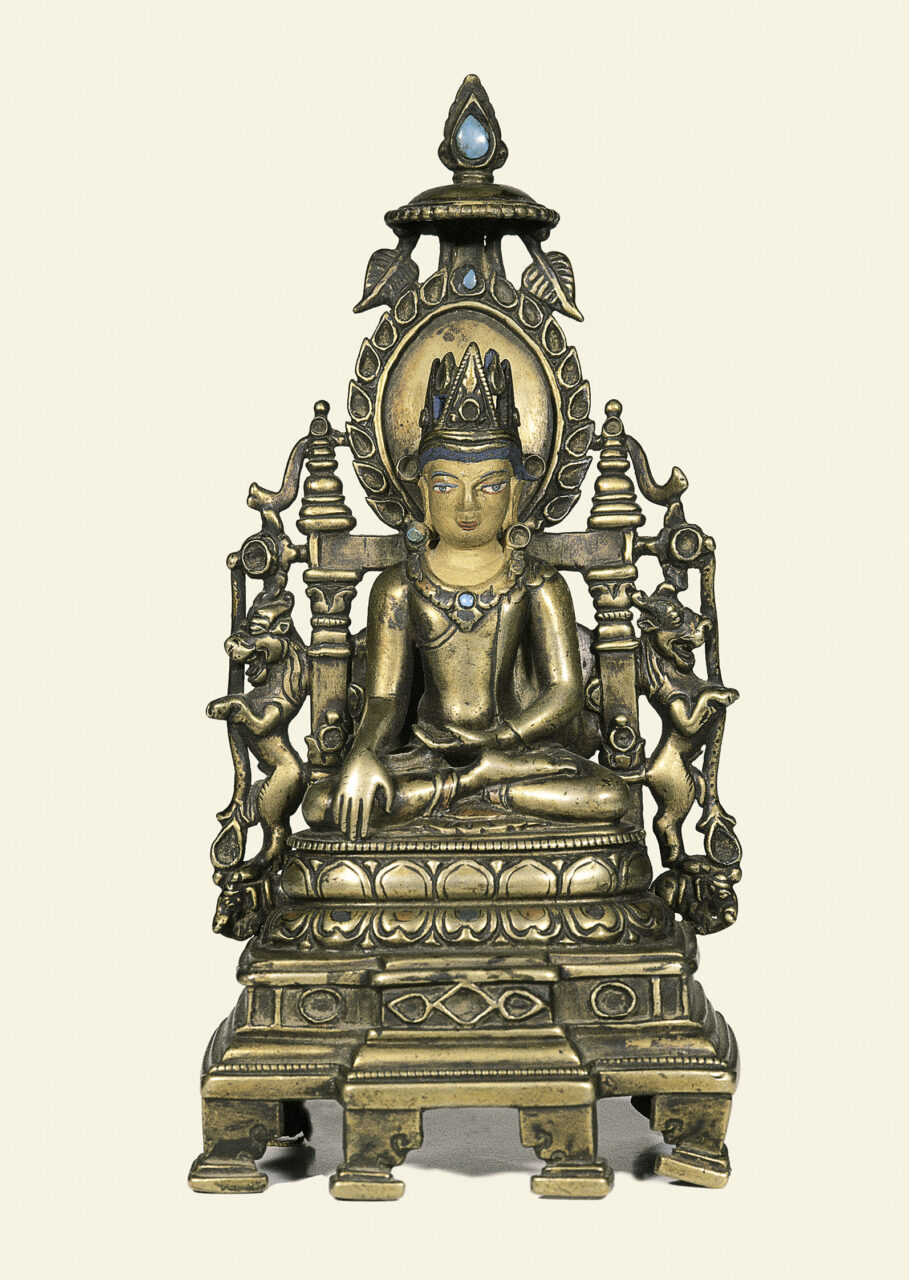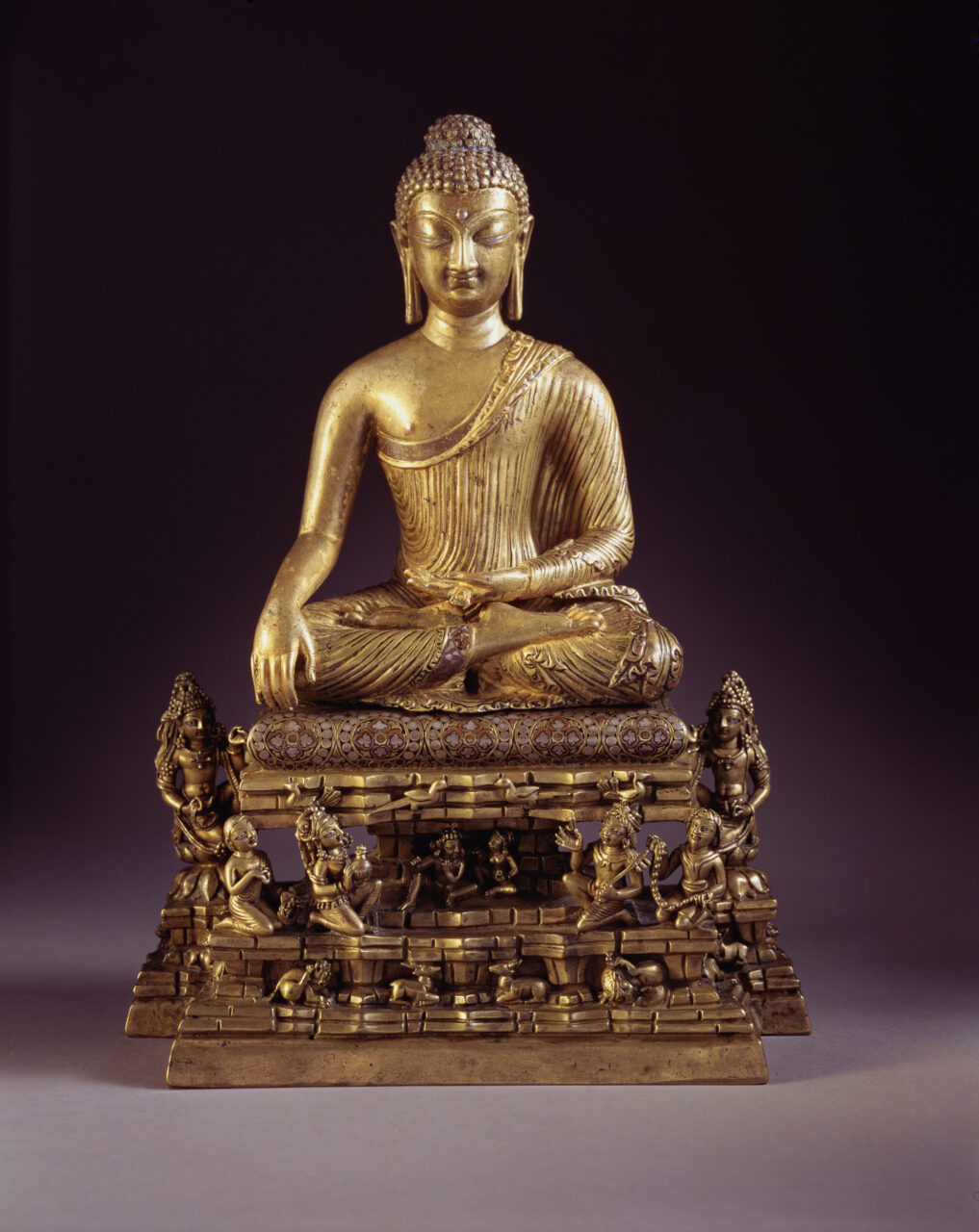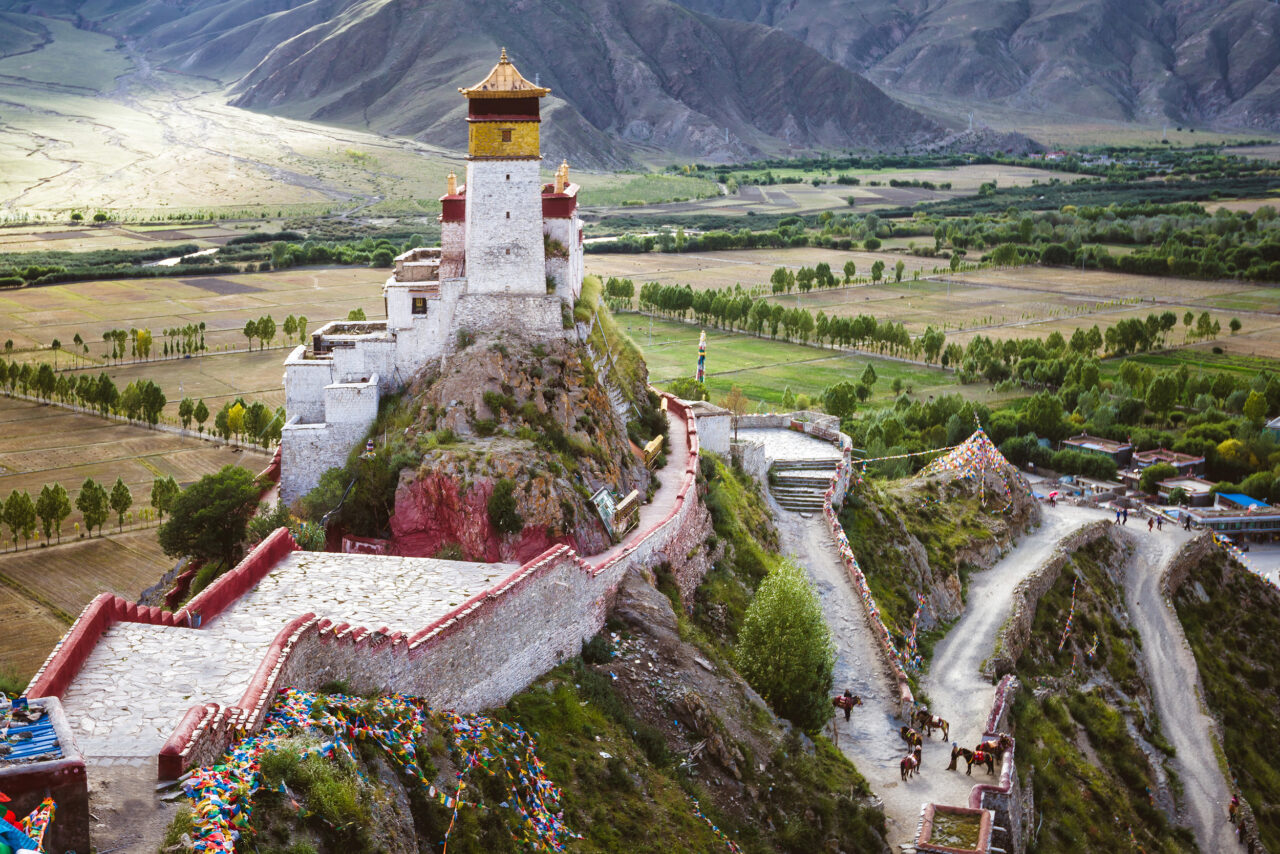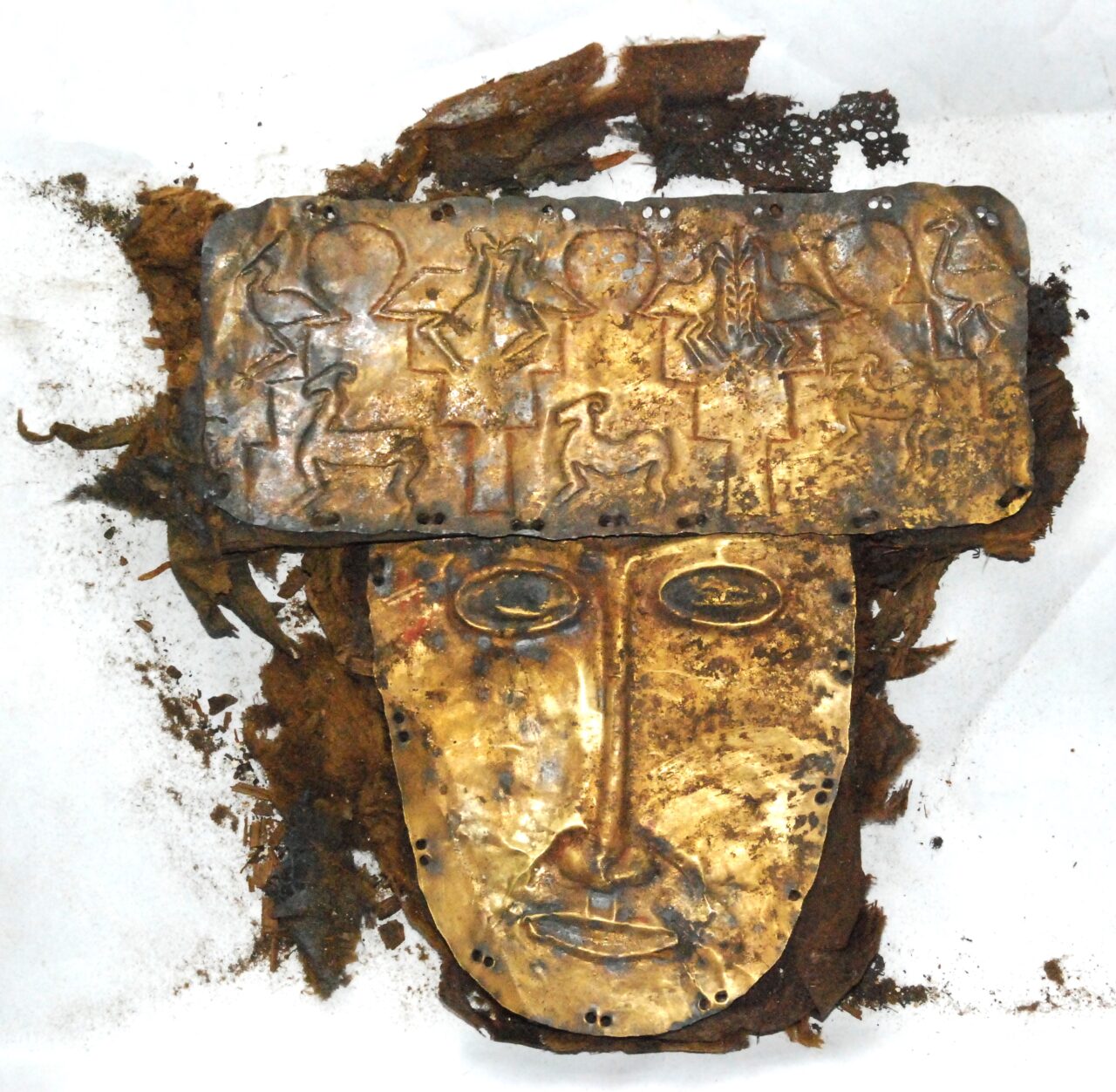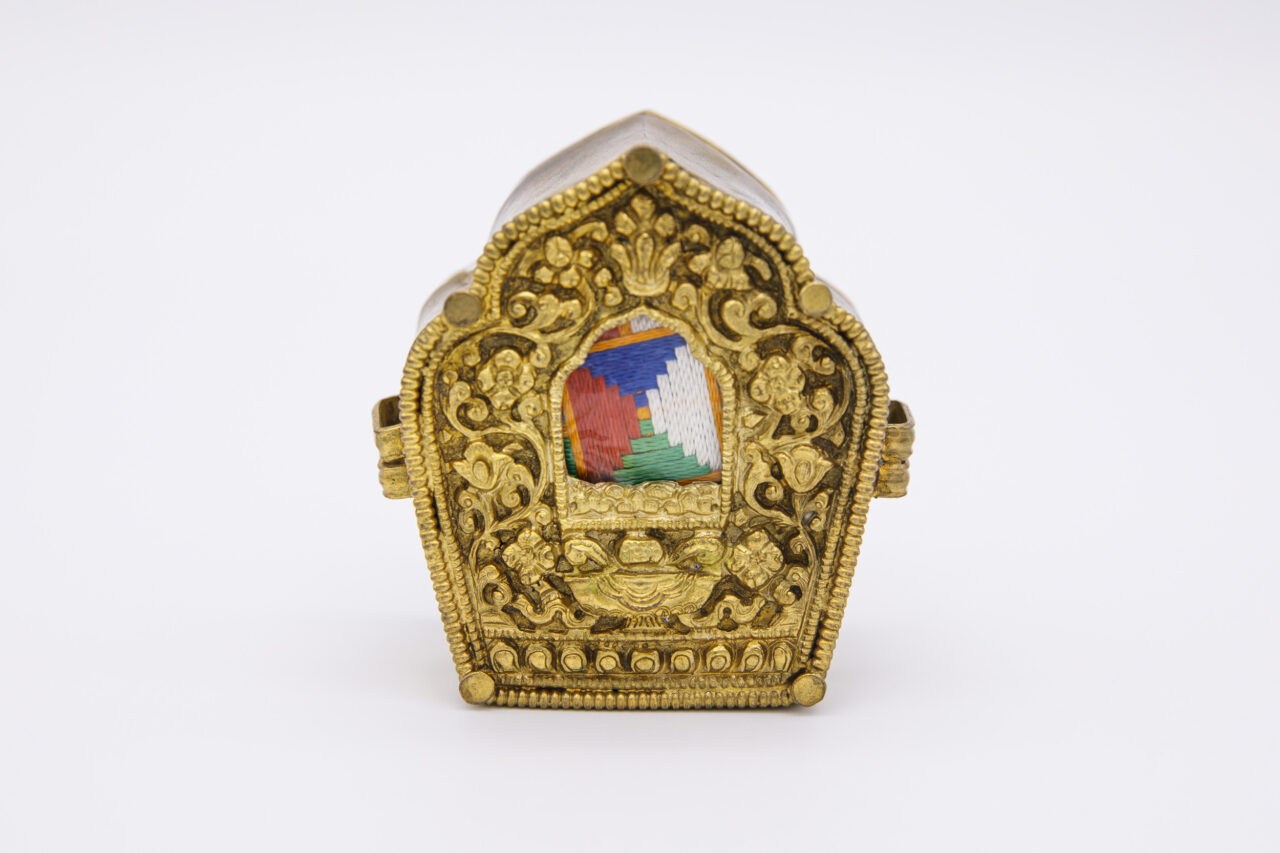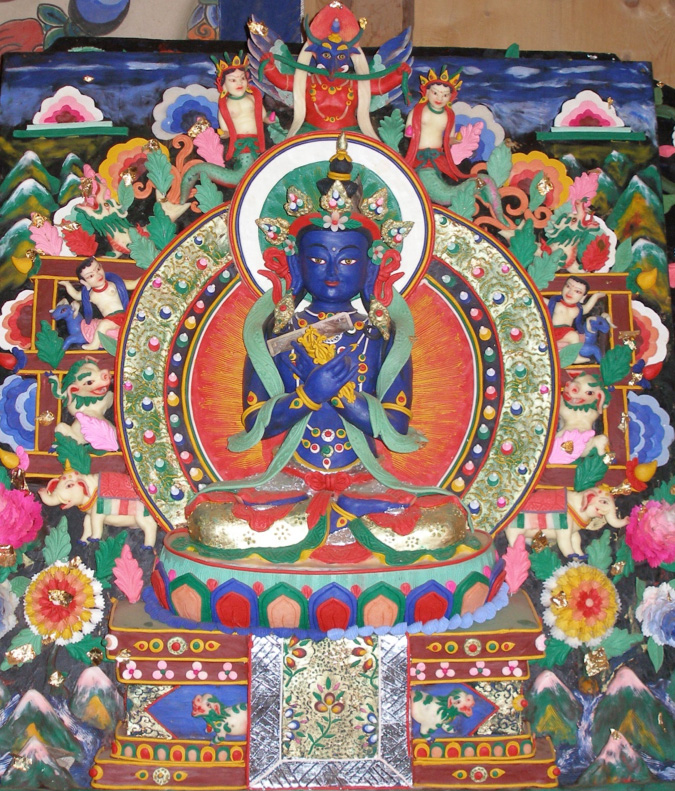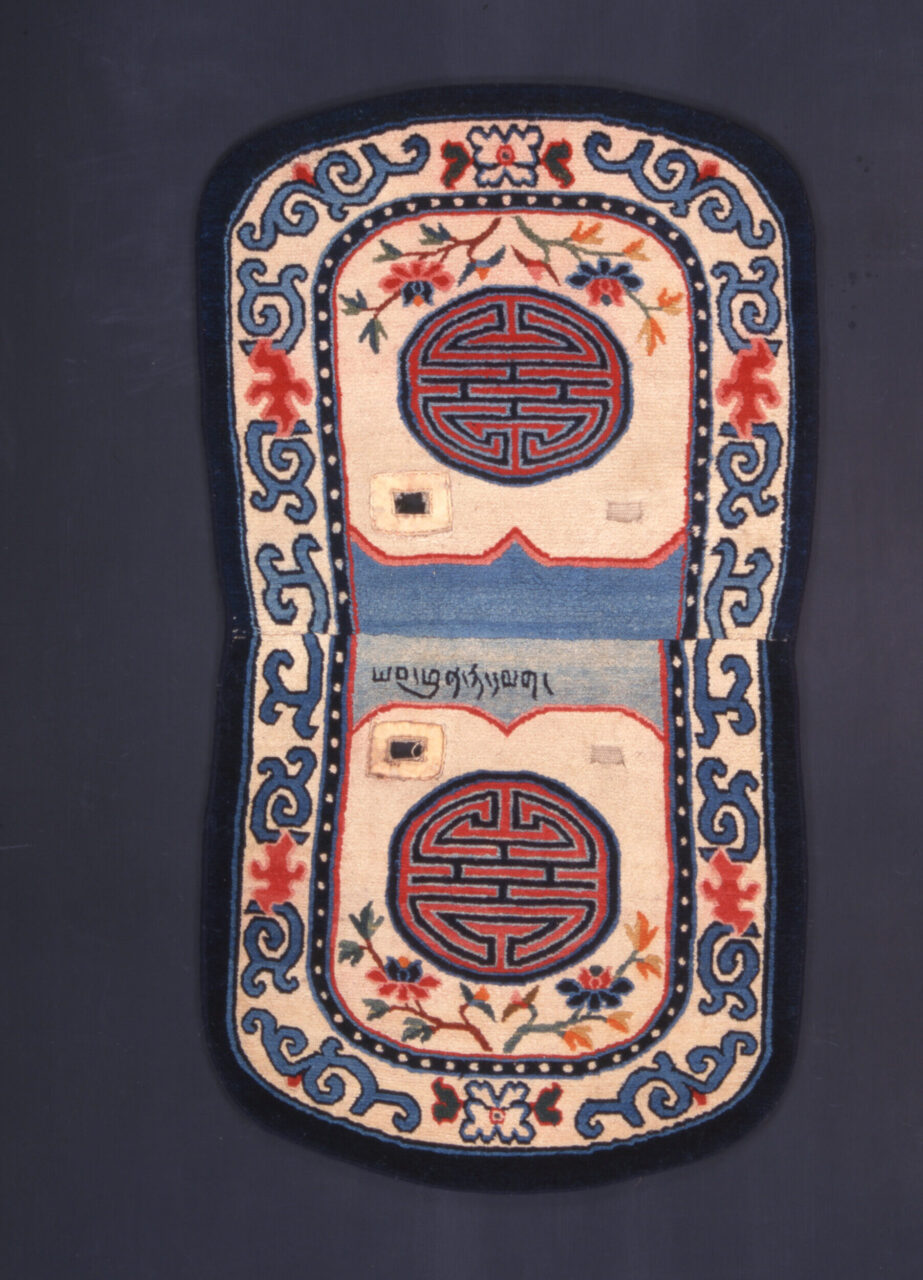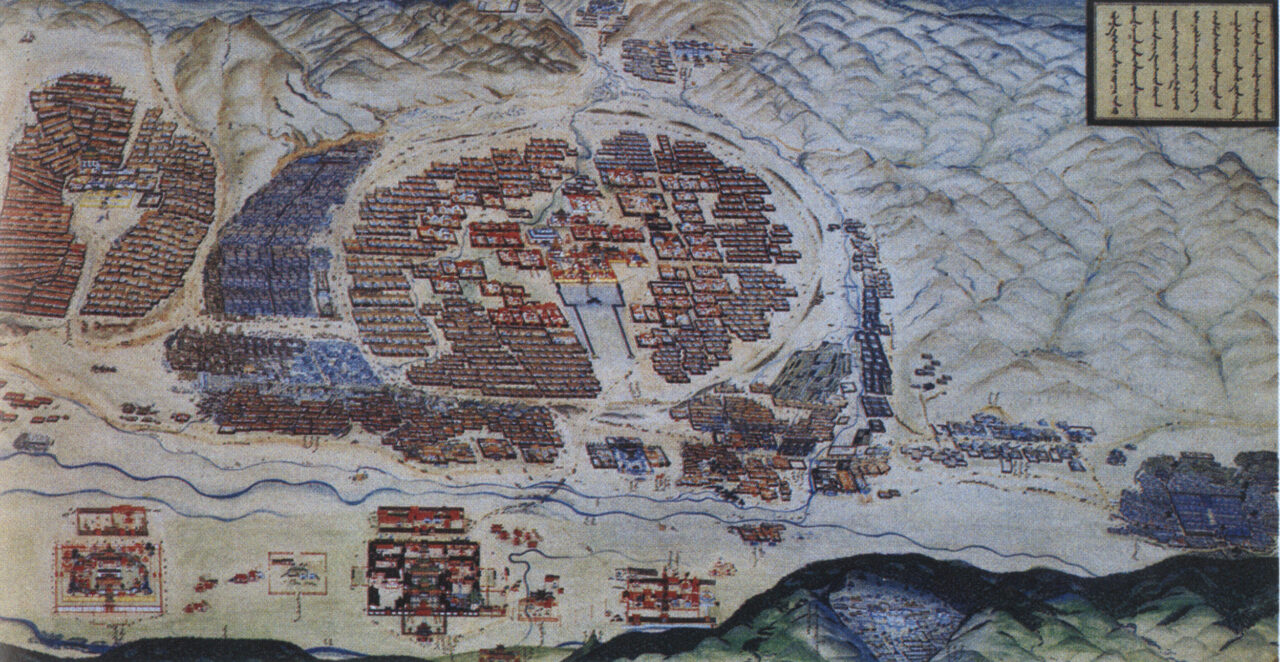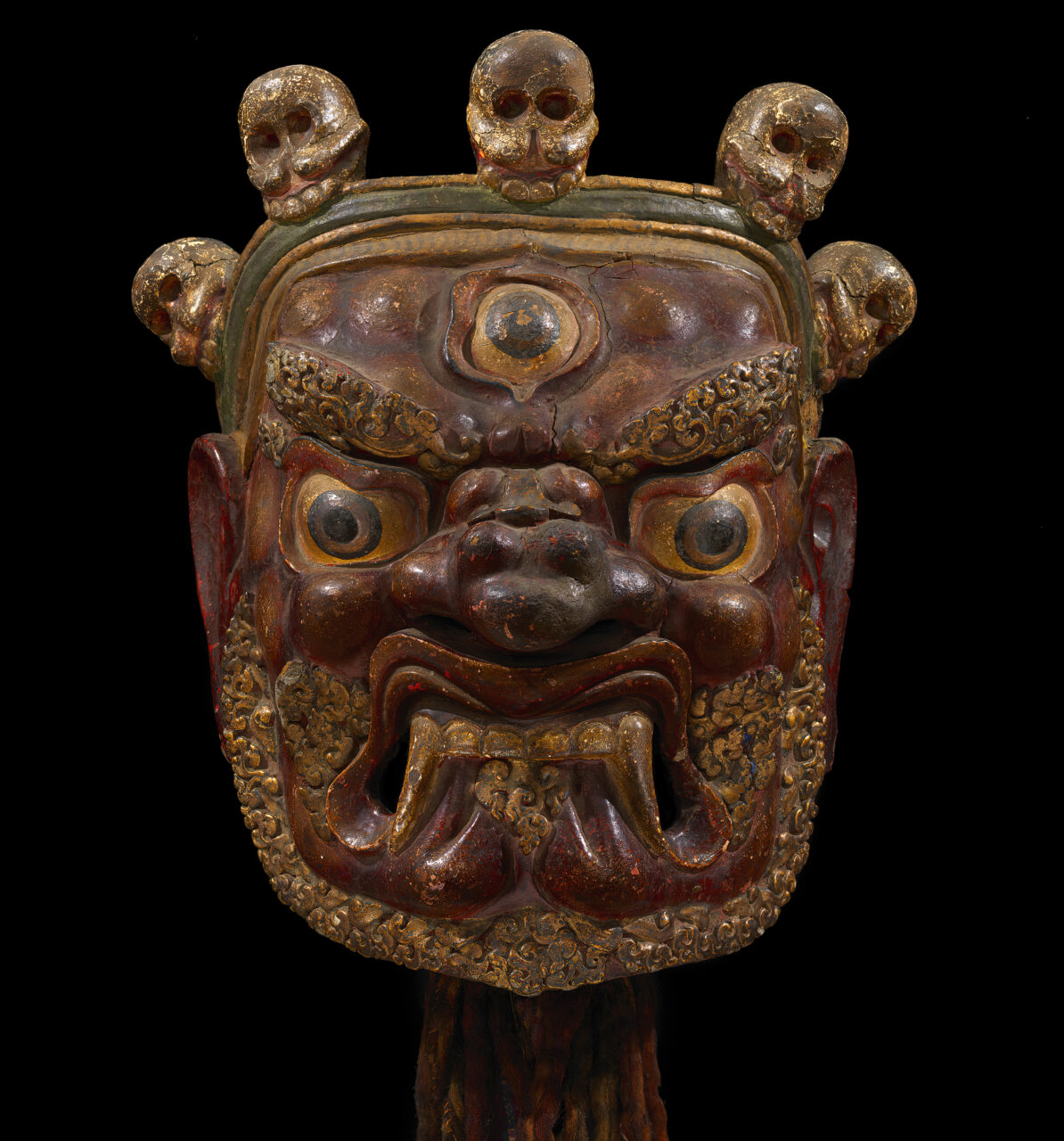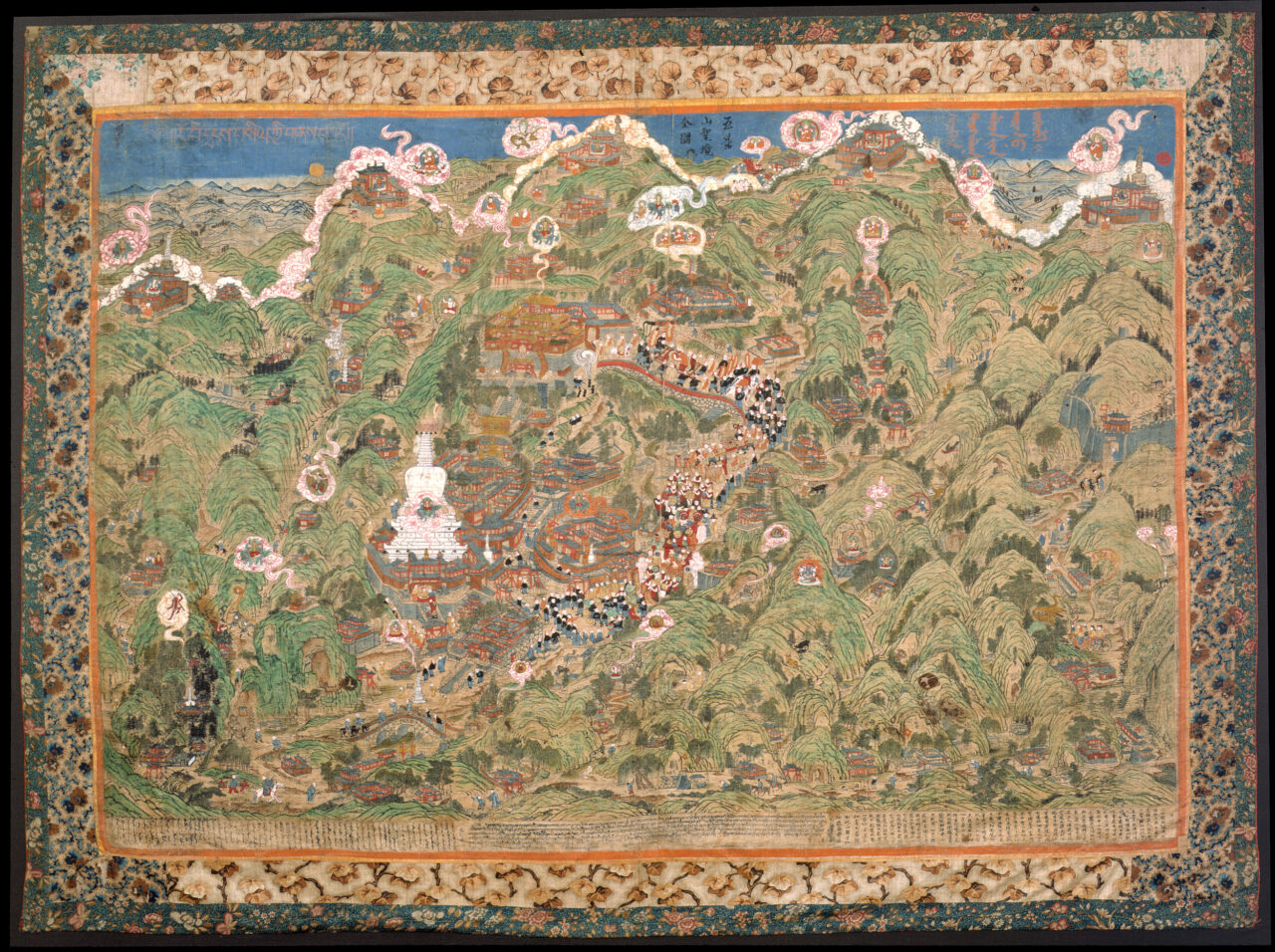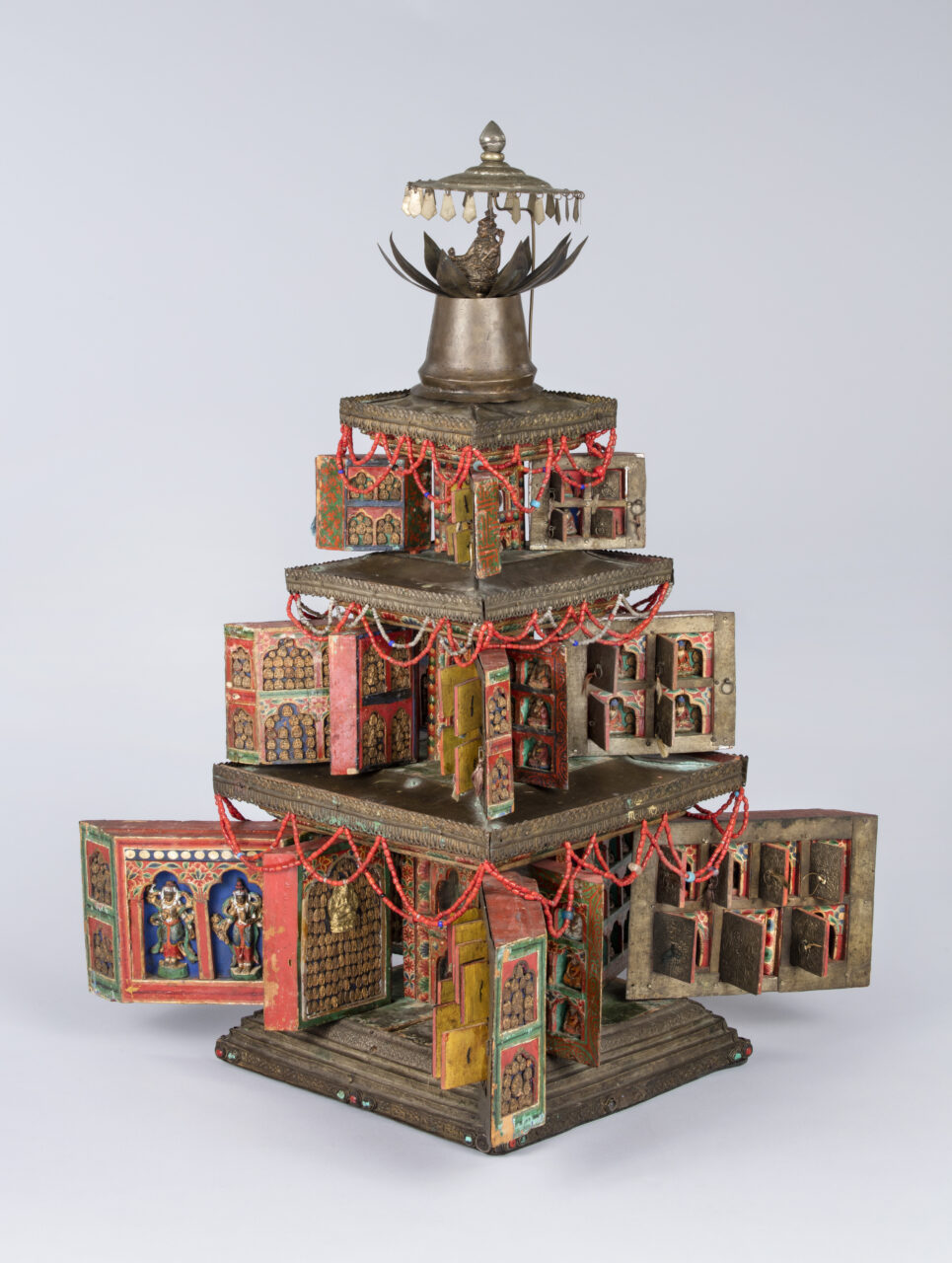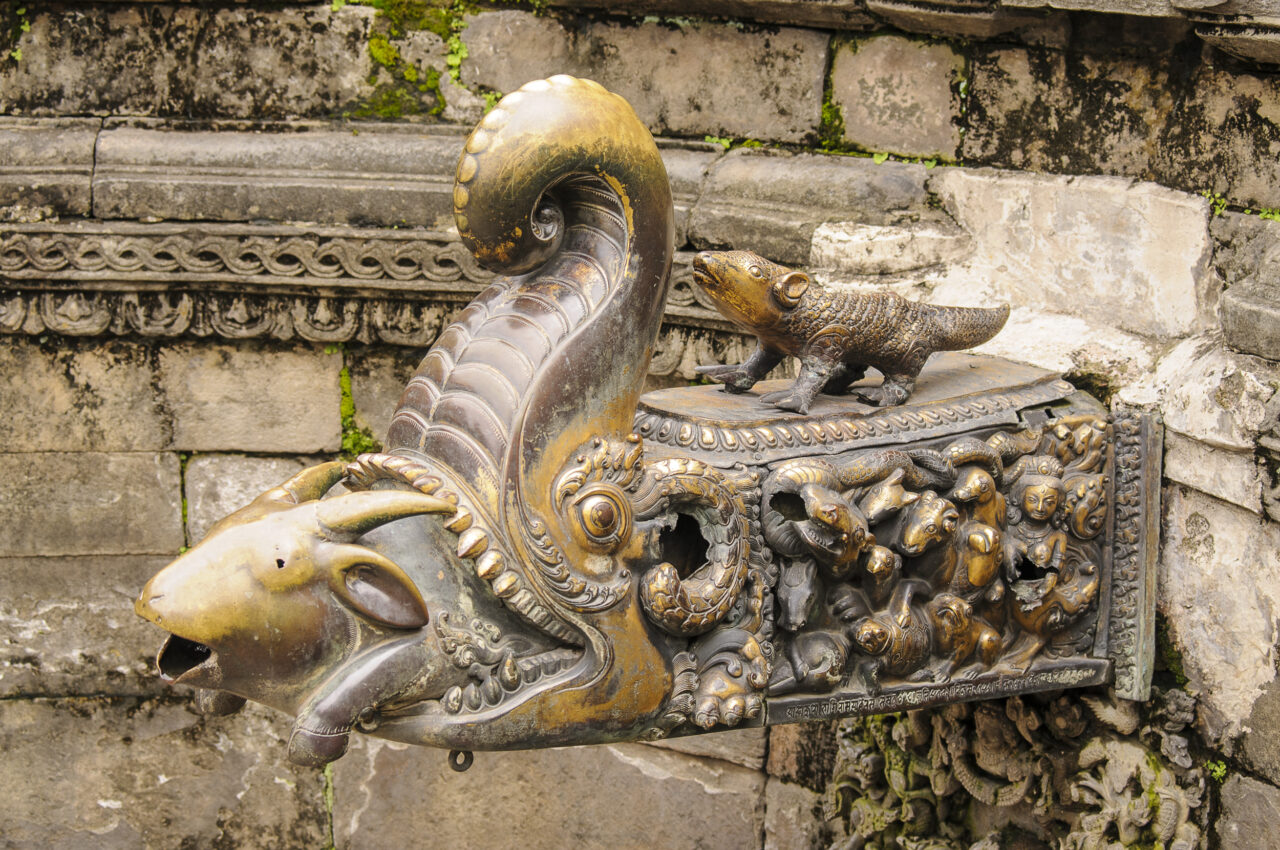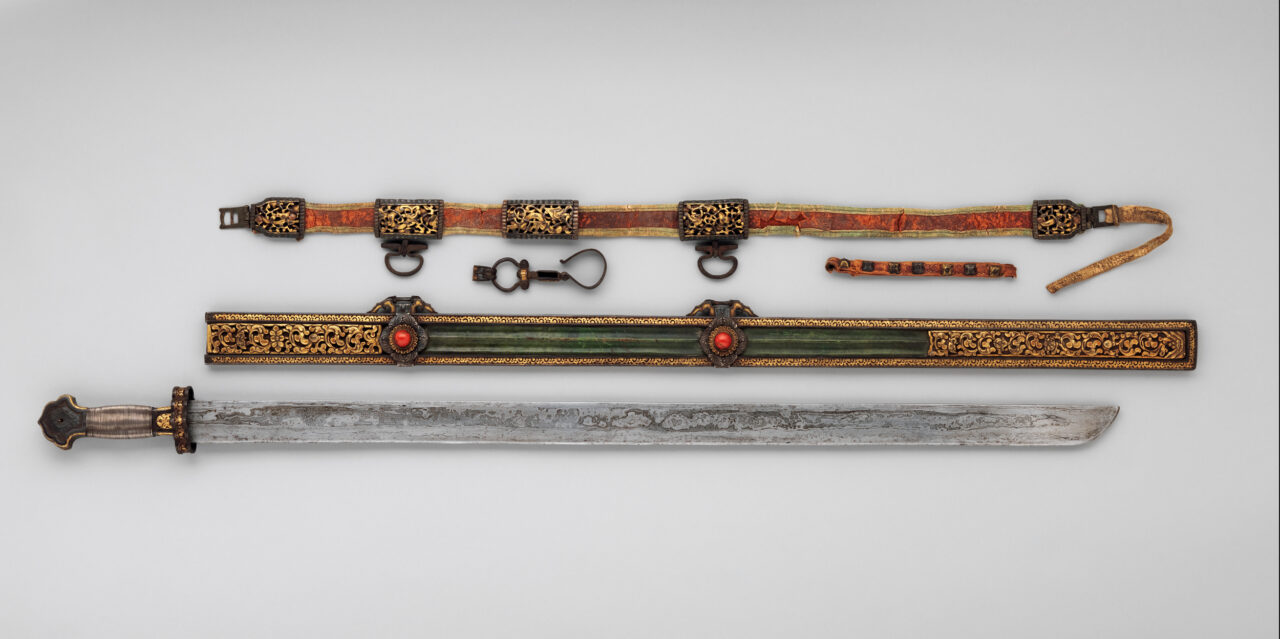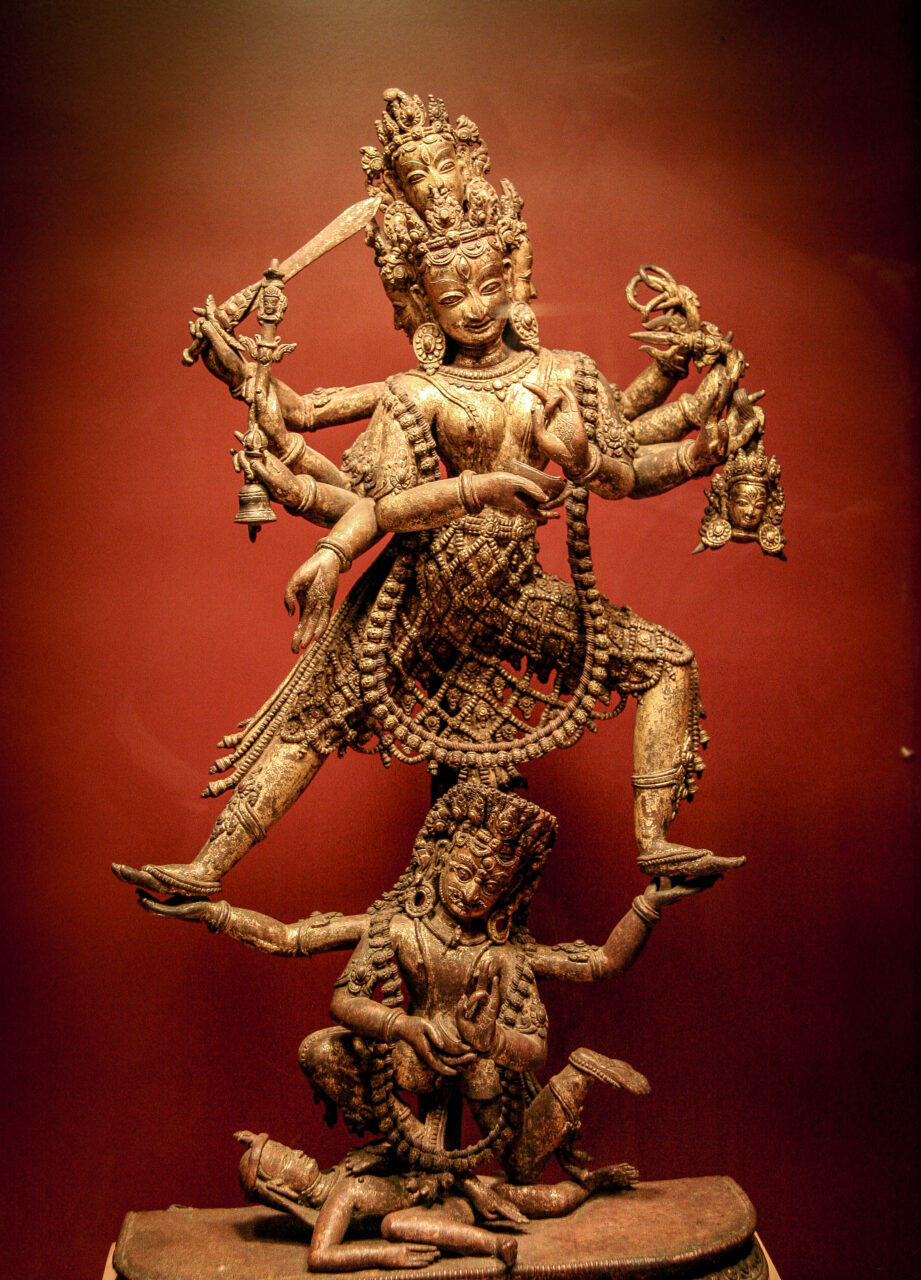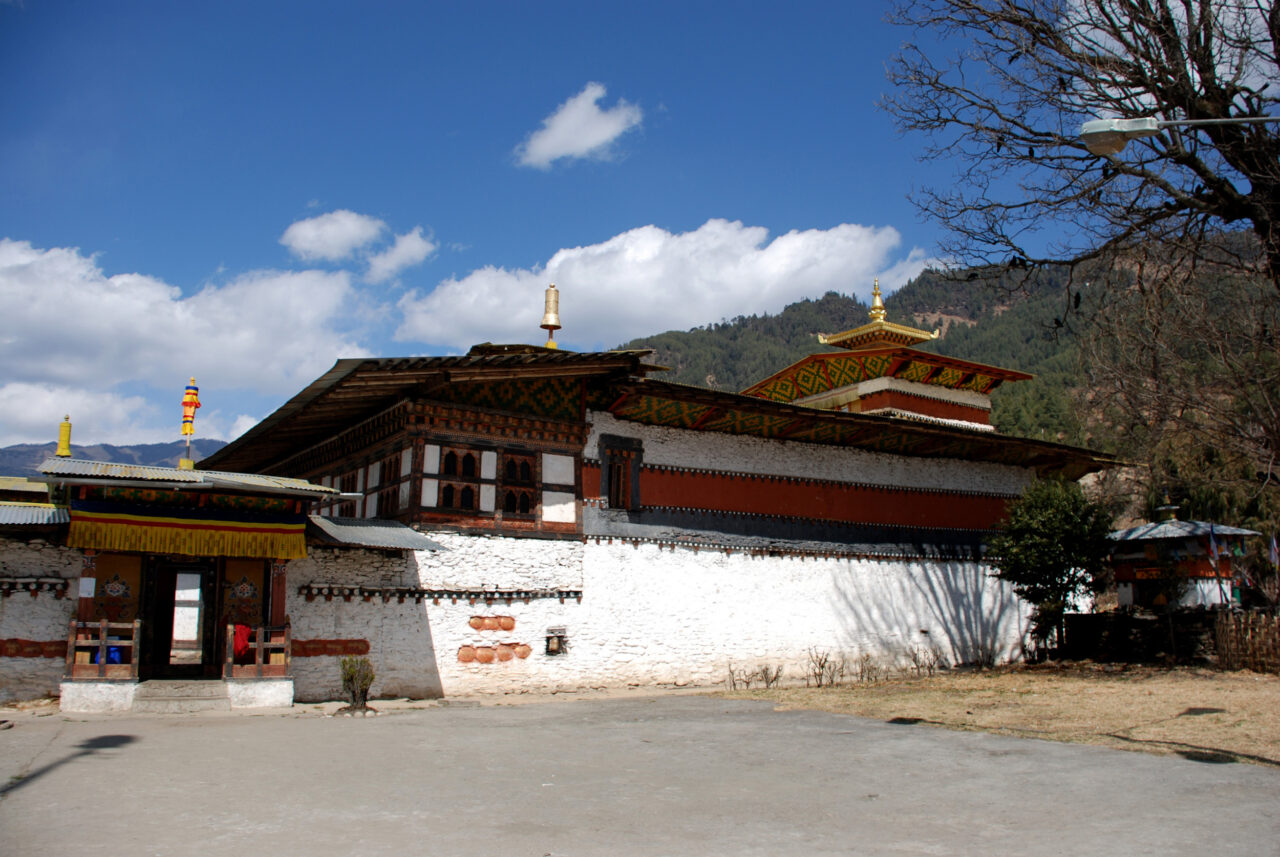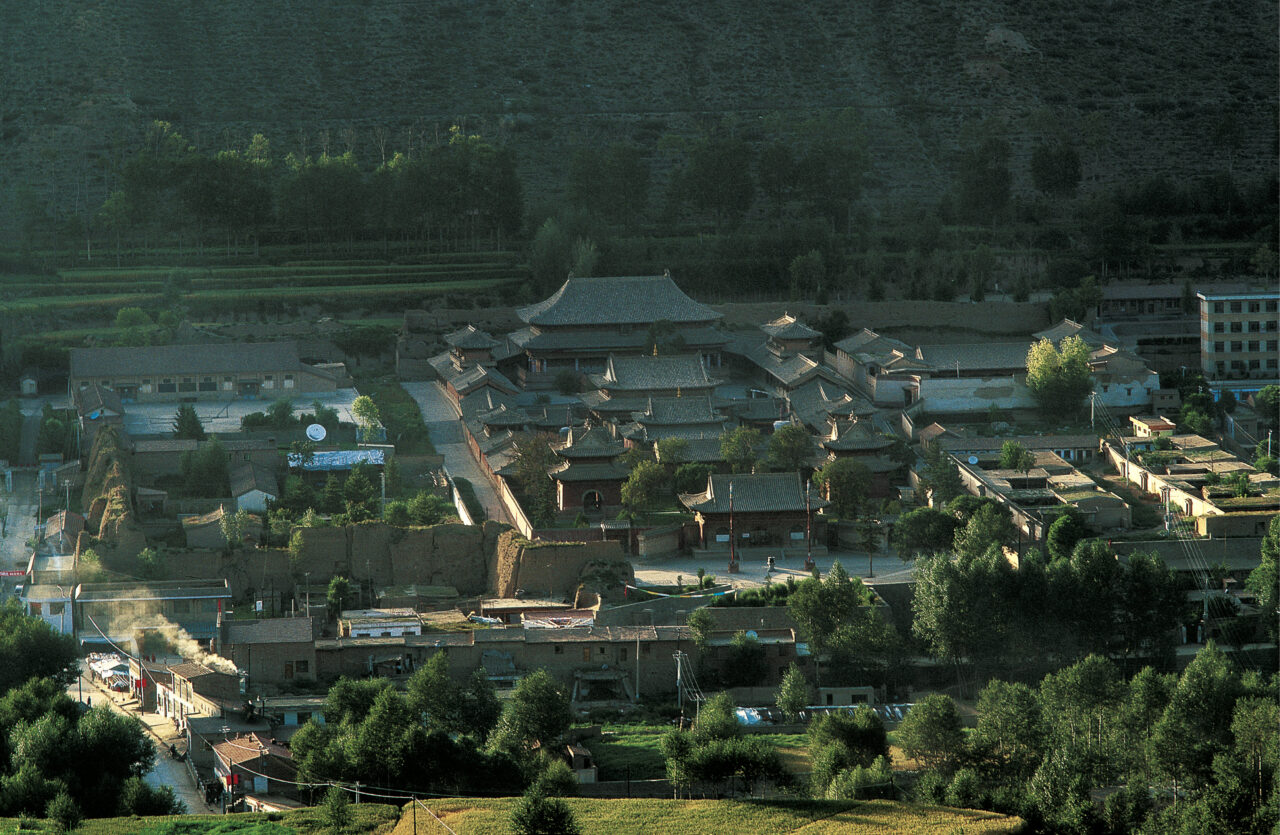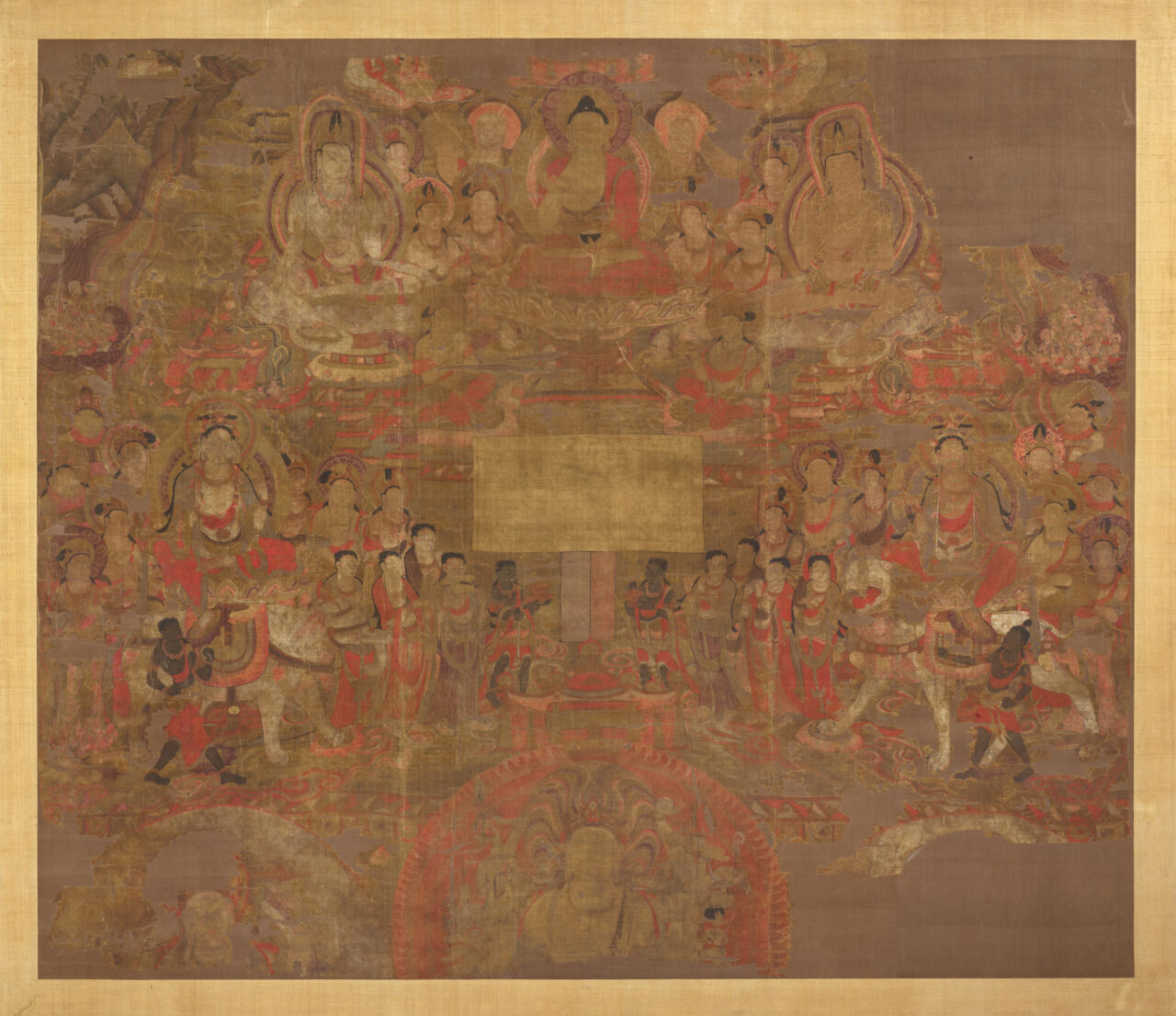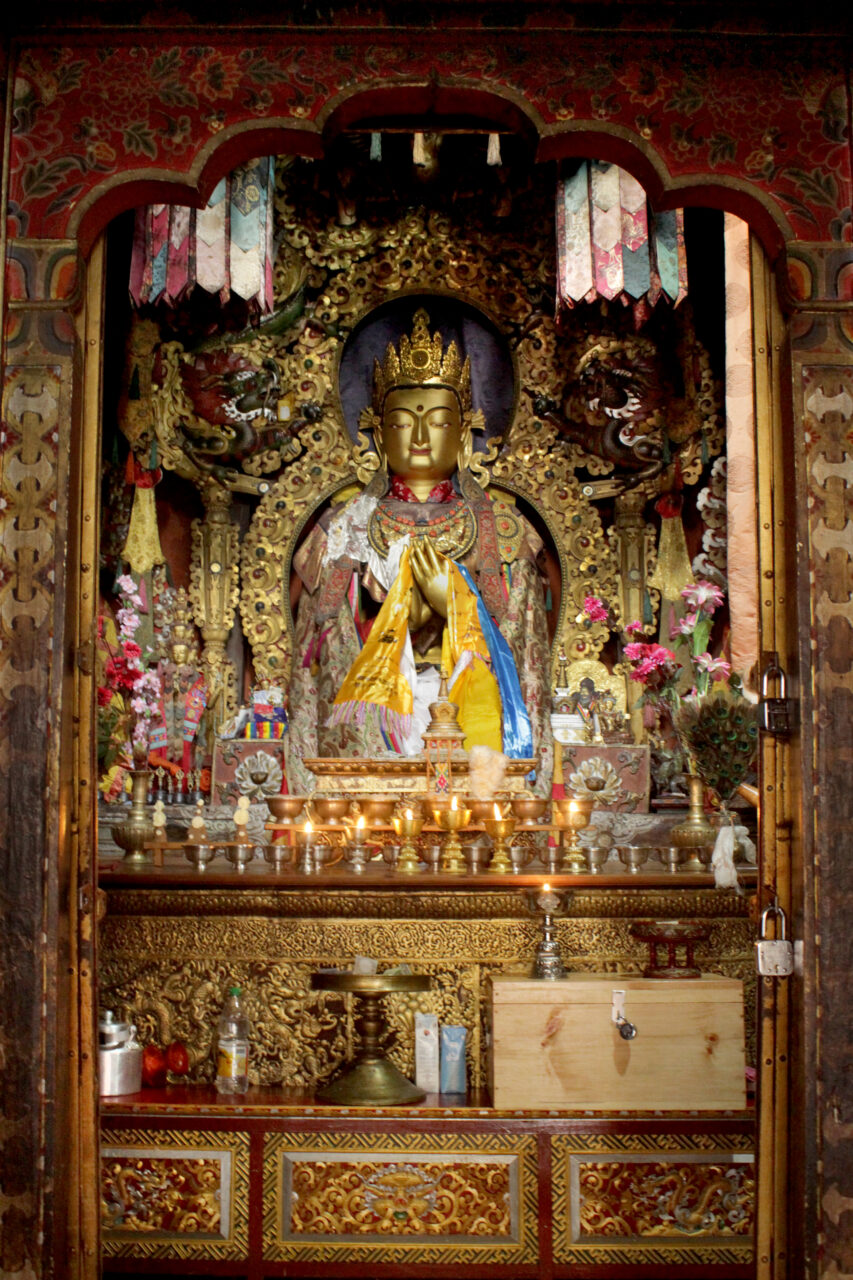Akshobhya is a buddha in the Mahayana and Vajrayana traditions. In the Five Buddha Family system of Vajrayana Buddhism, Akshobhya is the Buddha of the Vajra family, colored blue, and associated with the direction East.
Caste is a traditional system of social division in India and Nepal. The English word “caste” combines two Indic concepts. “Varna” refers to an ancient fourfold division of occupations into priests (brahmins), warriors, farmers, and laborers. In Nepal, the caste system is unique and applies to both Hindu and Buddhists. Like the Hindu brahmins, Buddhist Vajracharya priests and Shakyas are considered the highest caste among the Buddhists, with similar correlations to other social occupational groups. Udas or Uray caste is formed by hereditary merchants and artisans. They are known for their part in the development of industry, trade, arts and culture, and the trade with Tibet. The other ethnic groups traditionally existed largely outside of caste. The caste system was officially abolished in Nepal in 1963.
A monastery is a place where monks live, study, and perform ritual. It includes temples and other structures. Monasteries are central to Buddhism, and are also important in Bon, Hinduism, and Daoism. In Himalayan, Tibetan, and Inner Asian areas, some monasteries are enormous, wealthy, and powerful institutions, with branches of satellite monasteries forming networks across regions, often with thousands of monks, many decorated chapels, and huge holdings of land. Other monasteries, called hermitages, can be extremely simple, little more than a cave where hermits meditate. Generally, a Tibetan Buddhist monastery will have an assembly hall, several temples (Tib. lhakhang) for worship of specific deities, a protector chapel, as well as monks’ accommodations. A related institution in Newar Buddhism are the baha and bahi.
The Newar People of the Kathmandu Valley of Nepal retain the unbroken traditions of Mahayana and Vajrayana Buddhism south of the Himalayas, preserving many ritual practices and Sanskrit-language texts that have been lost elsewhere. Celibate monasticism is no longer practiced among the Newars, but instead Buddhist ritualists are divided into two castes. One is the Shakyas, temple-priests who maintain ancient urban monasteries (Newar: bahas, bahis) as places of worship. The other is the Vajracharyas, tantric specialists who perform rituals at communal festivals and important life events. The Svayambhu Stupa is the most important ritual center for Newar Buddhists and the center of the Kathmandu Mandala. Today many Newars also practice Theravada and Tibetan Buddhism.
Pagoda is an architectural form found all across South and East Asia. Pagodas are tall, tower-like structures with multiple tiers of sloping eaves, usually square or octagonal, and often get smaller with height. In Nepal and Tibet pagodas are usually used as temples. In China many pagodas functioned as stupas. Other pagodas are used as mosque minarets (towers used for the Islamic call to prayer).
A practice of hiring and commissioning artists to create works of art. In religious context patrons were often rulers, religious leaders, as well as ordinary people. (see also donor)





